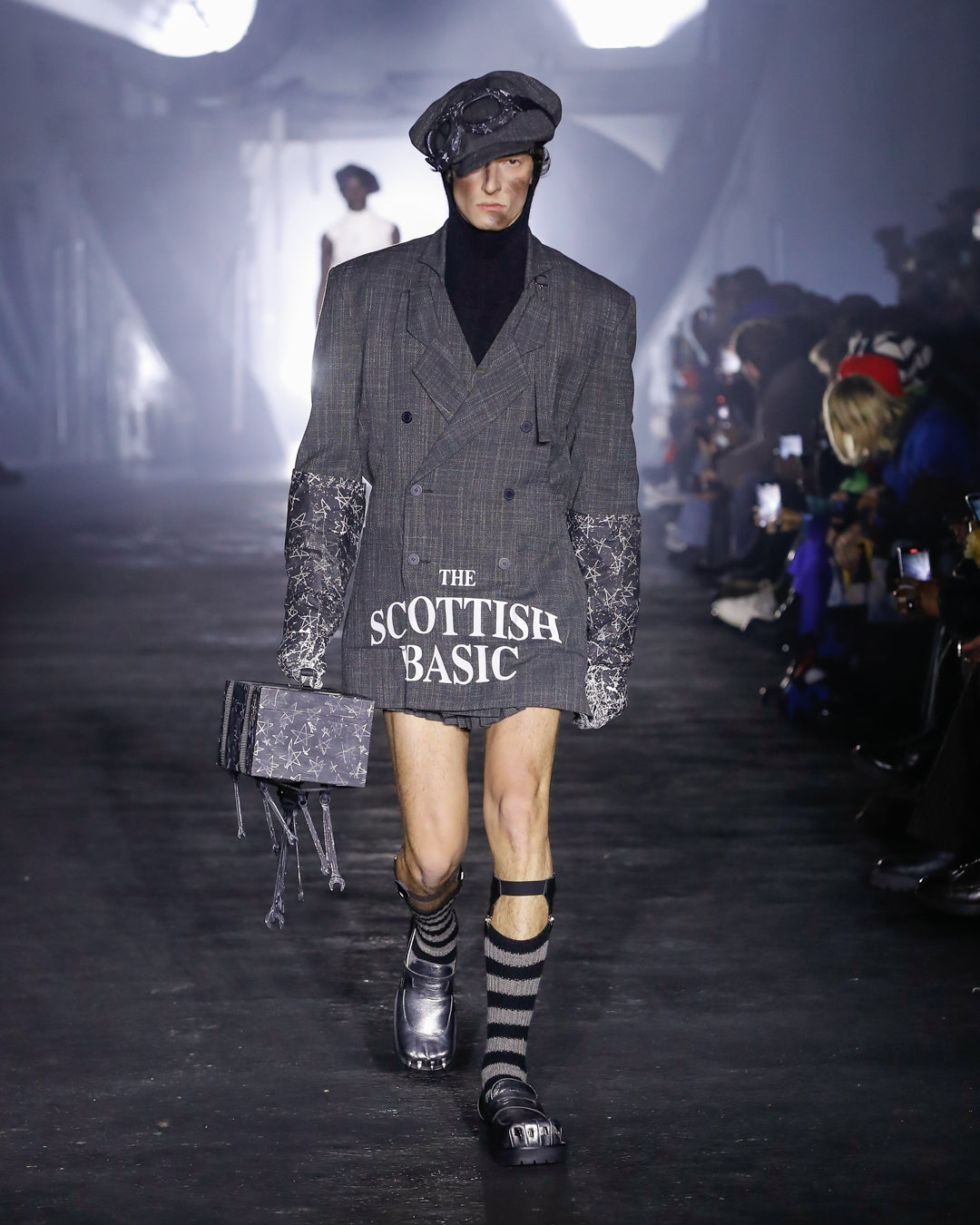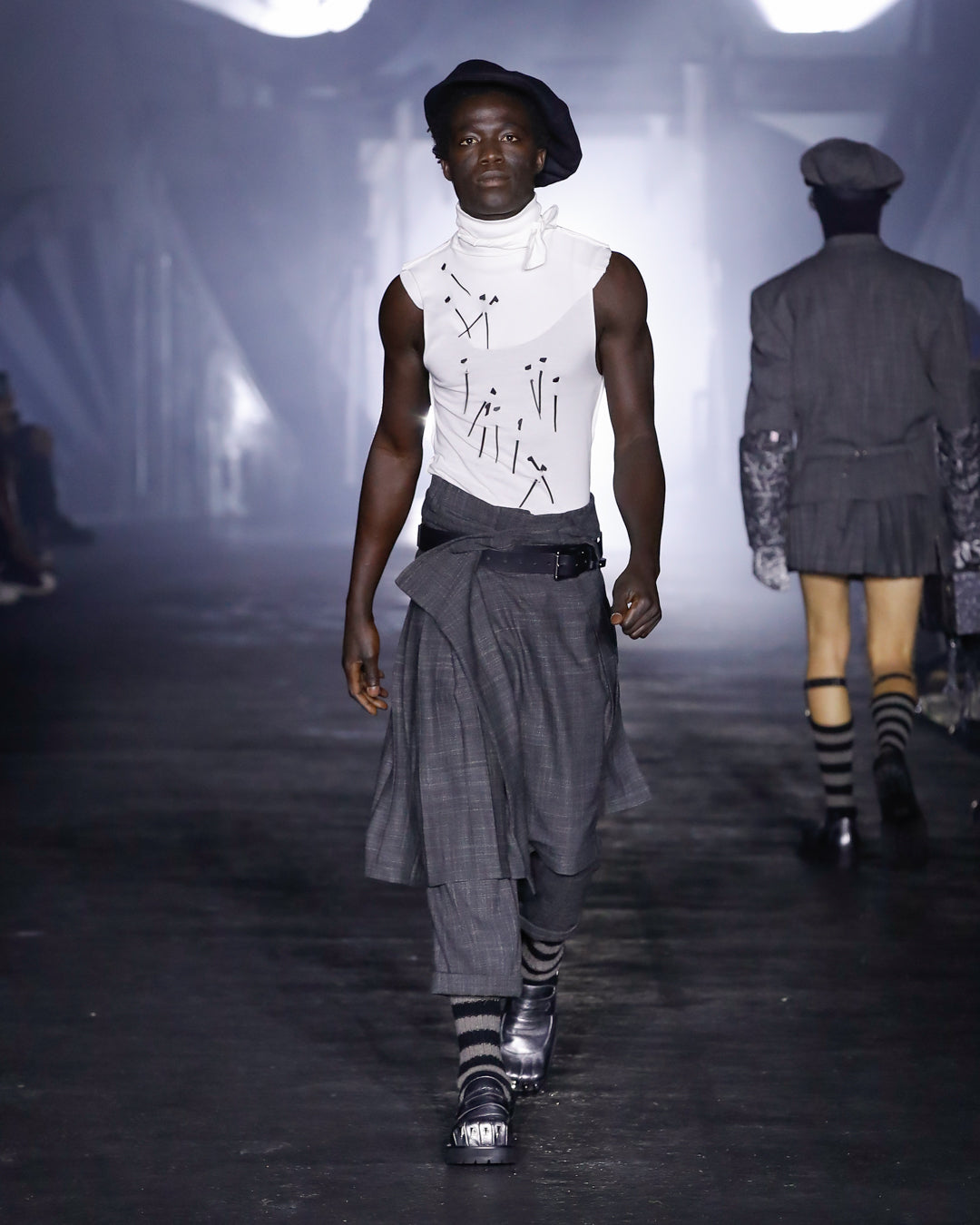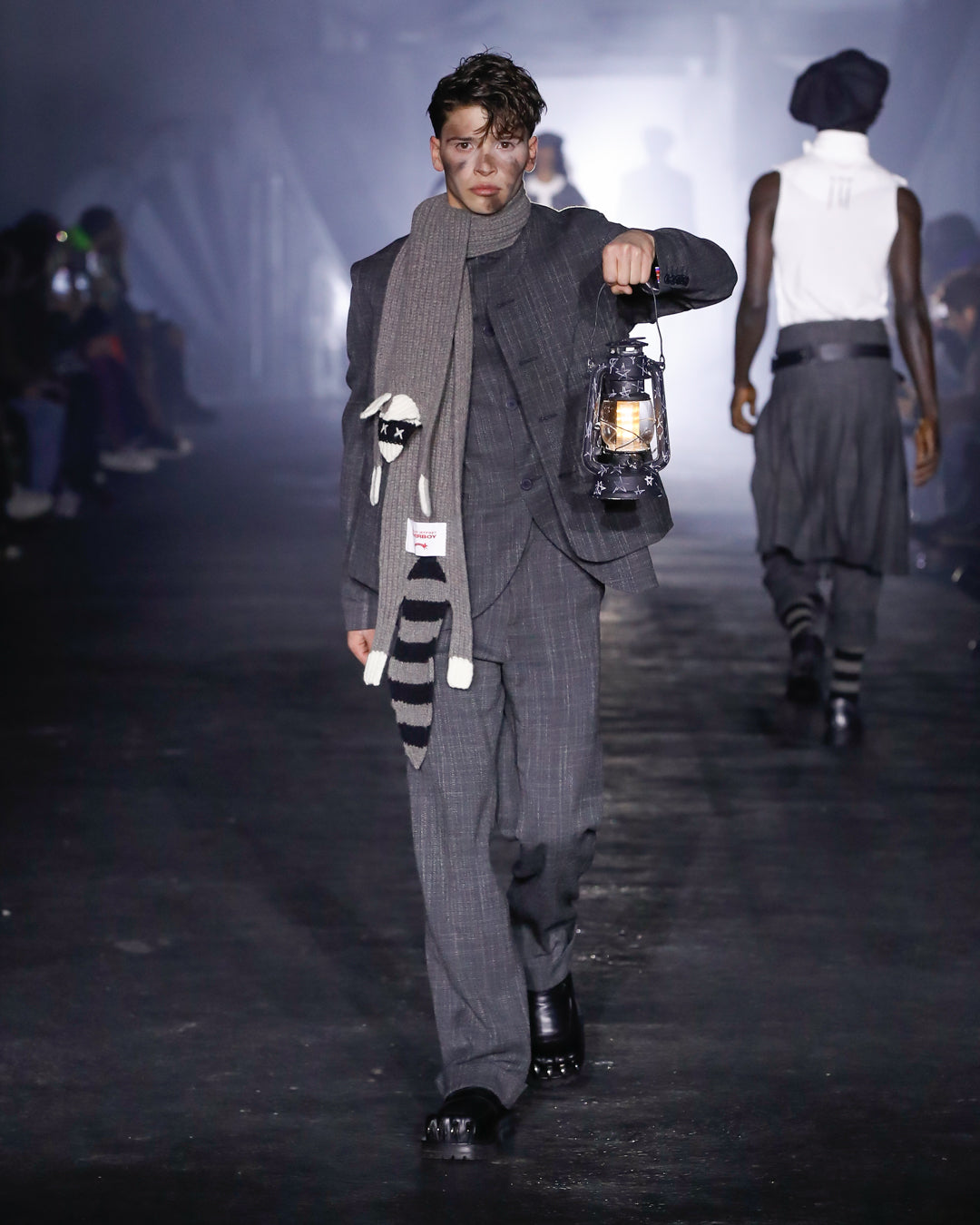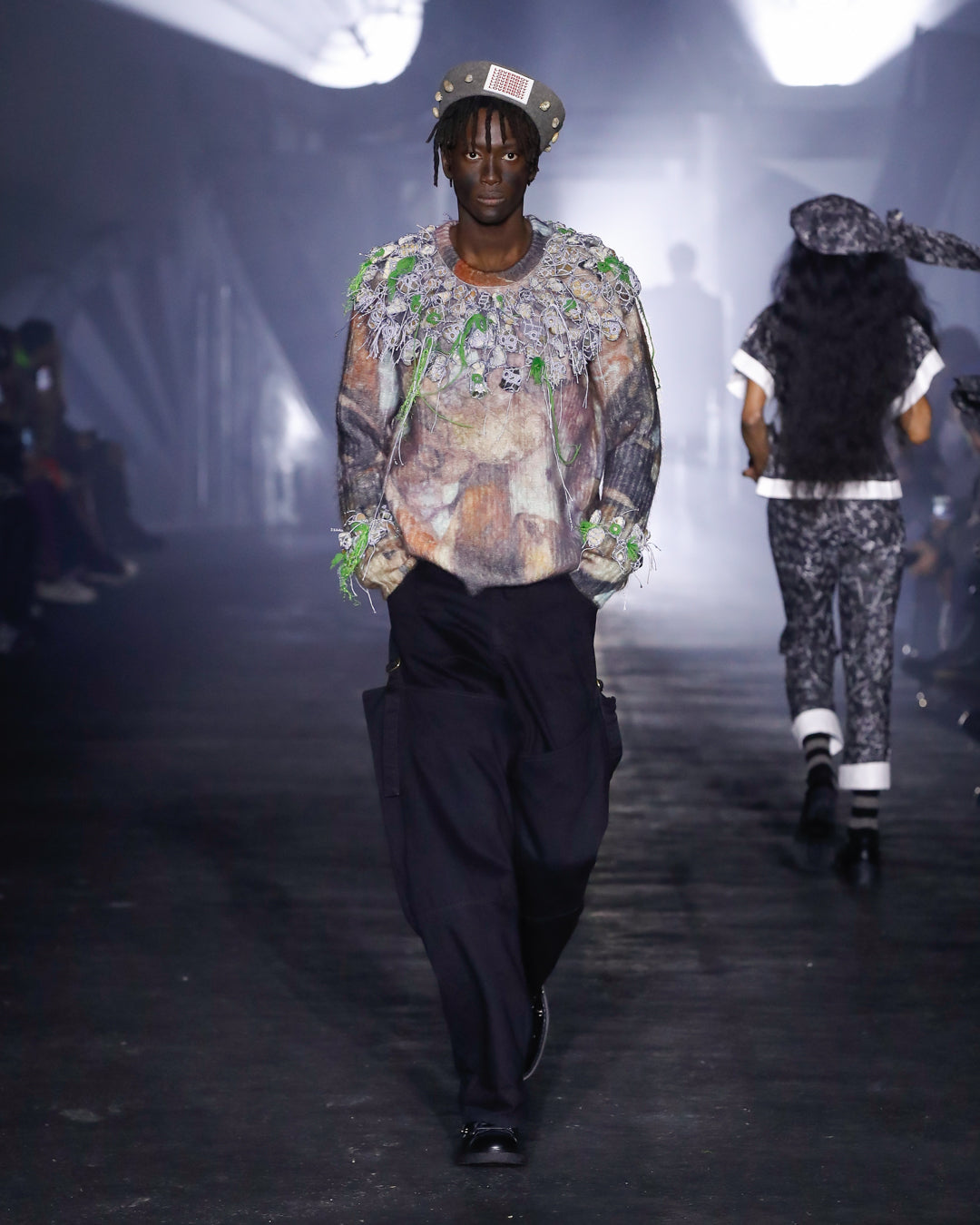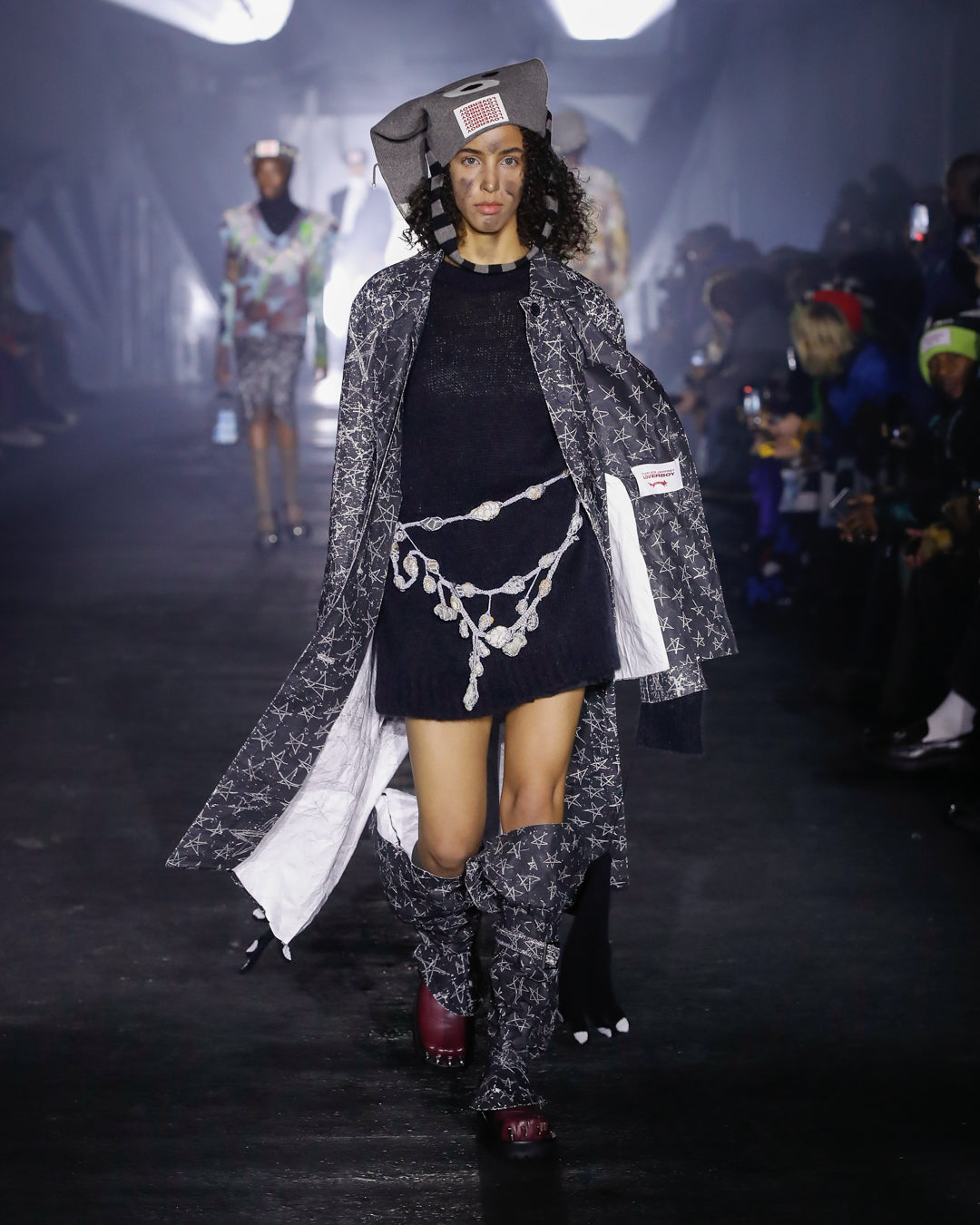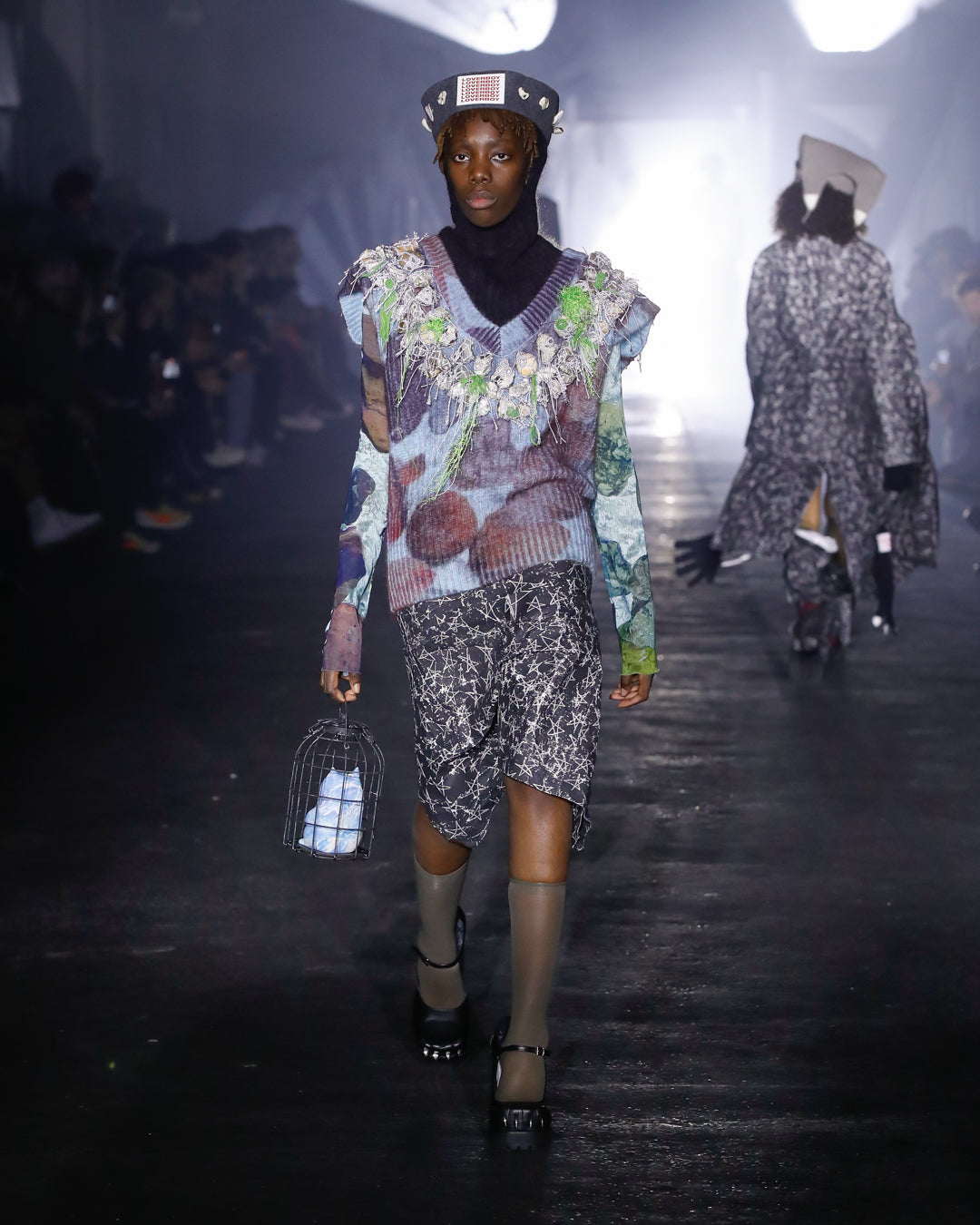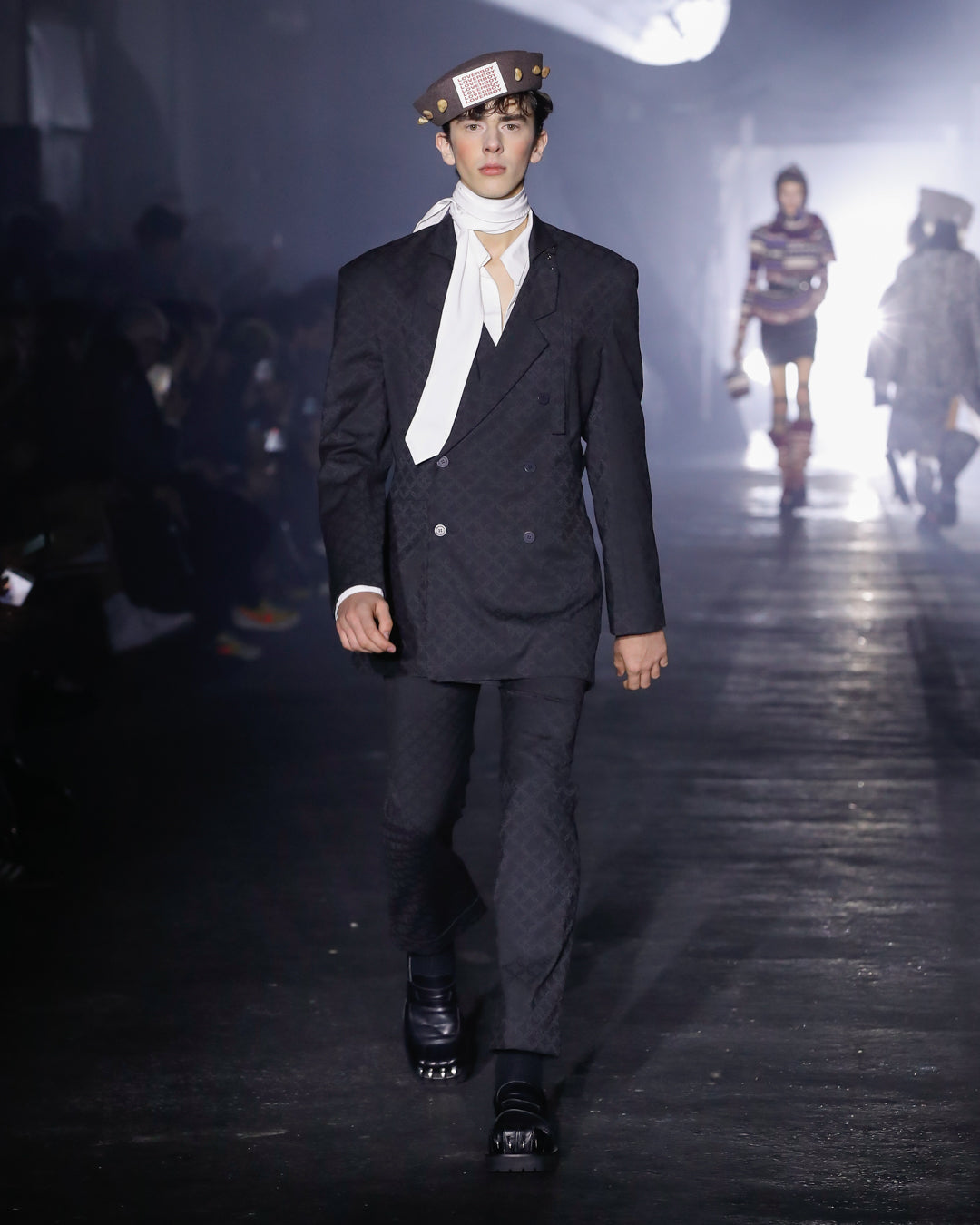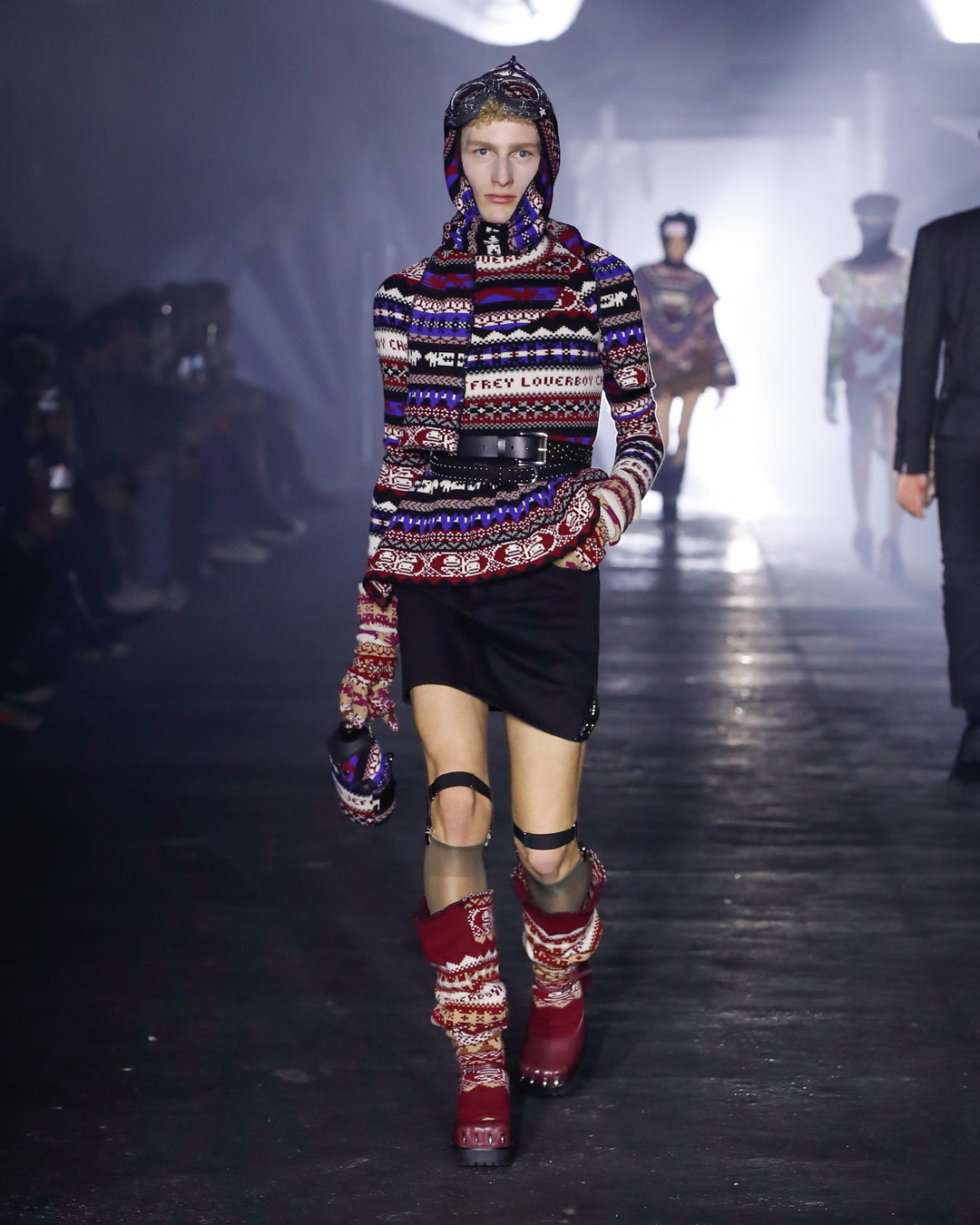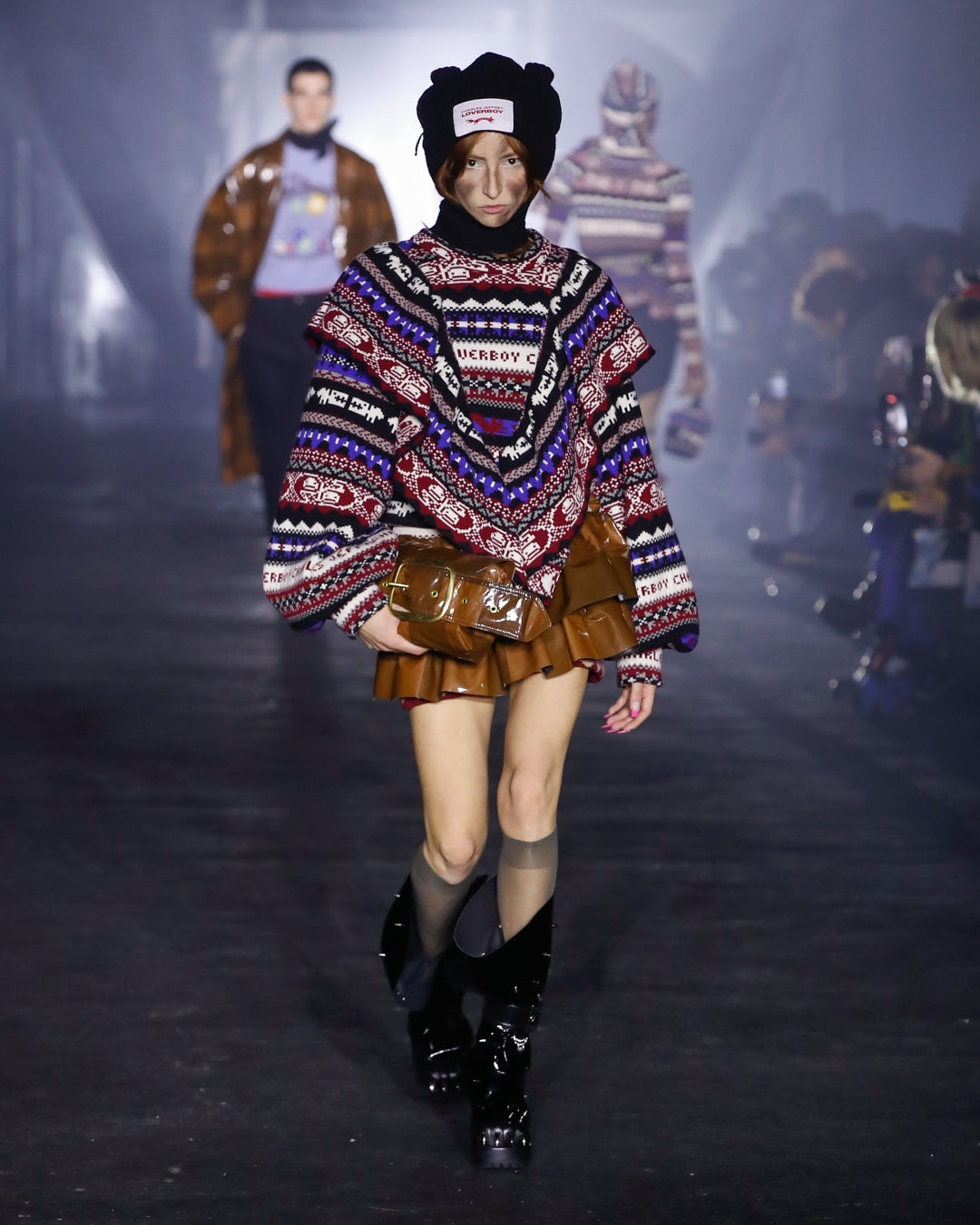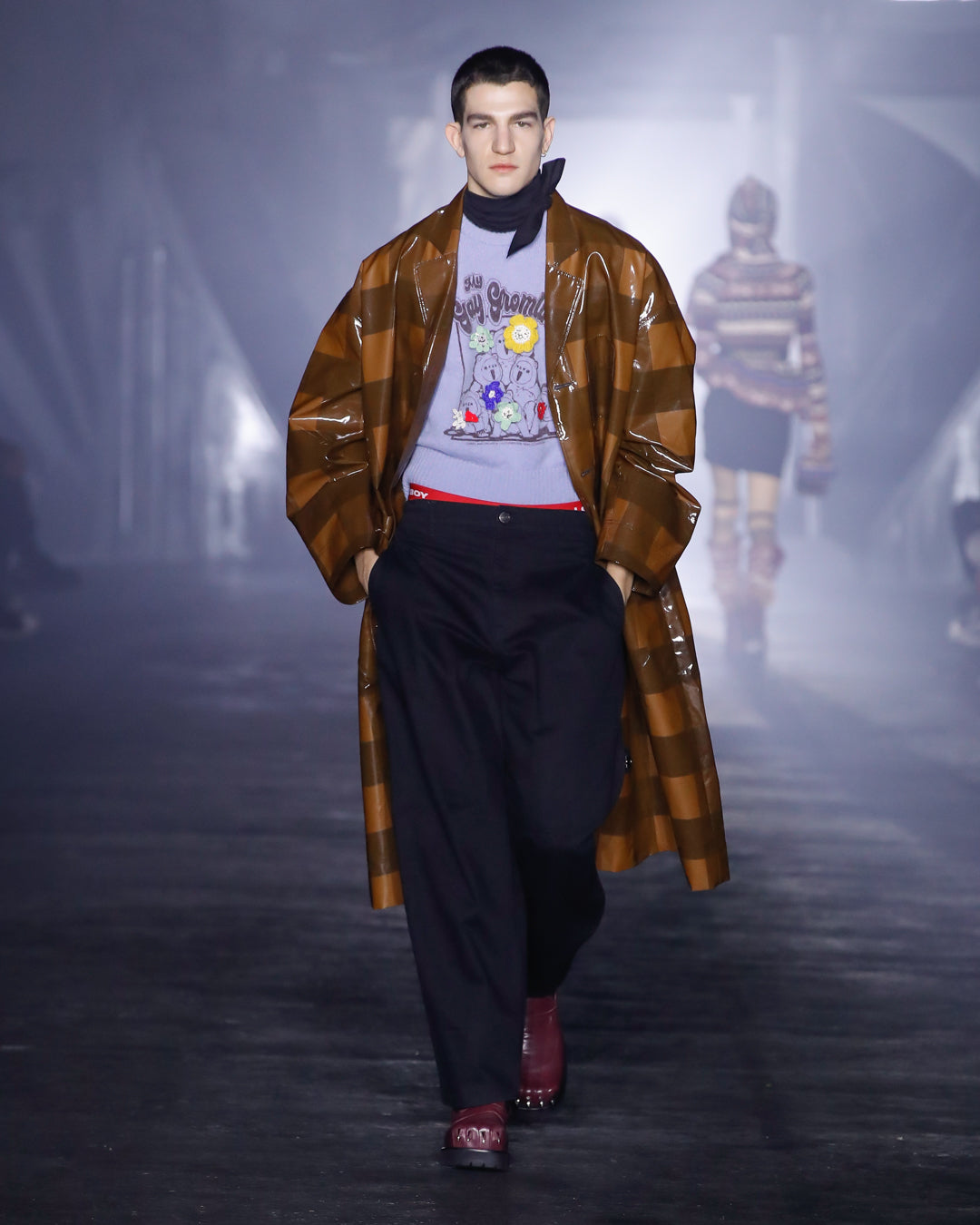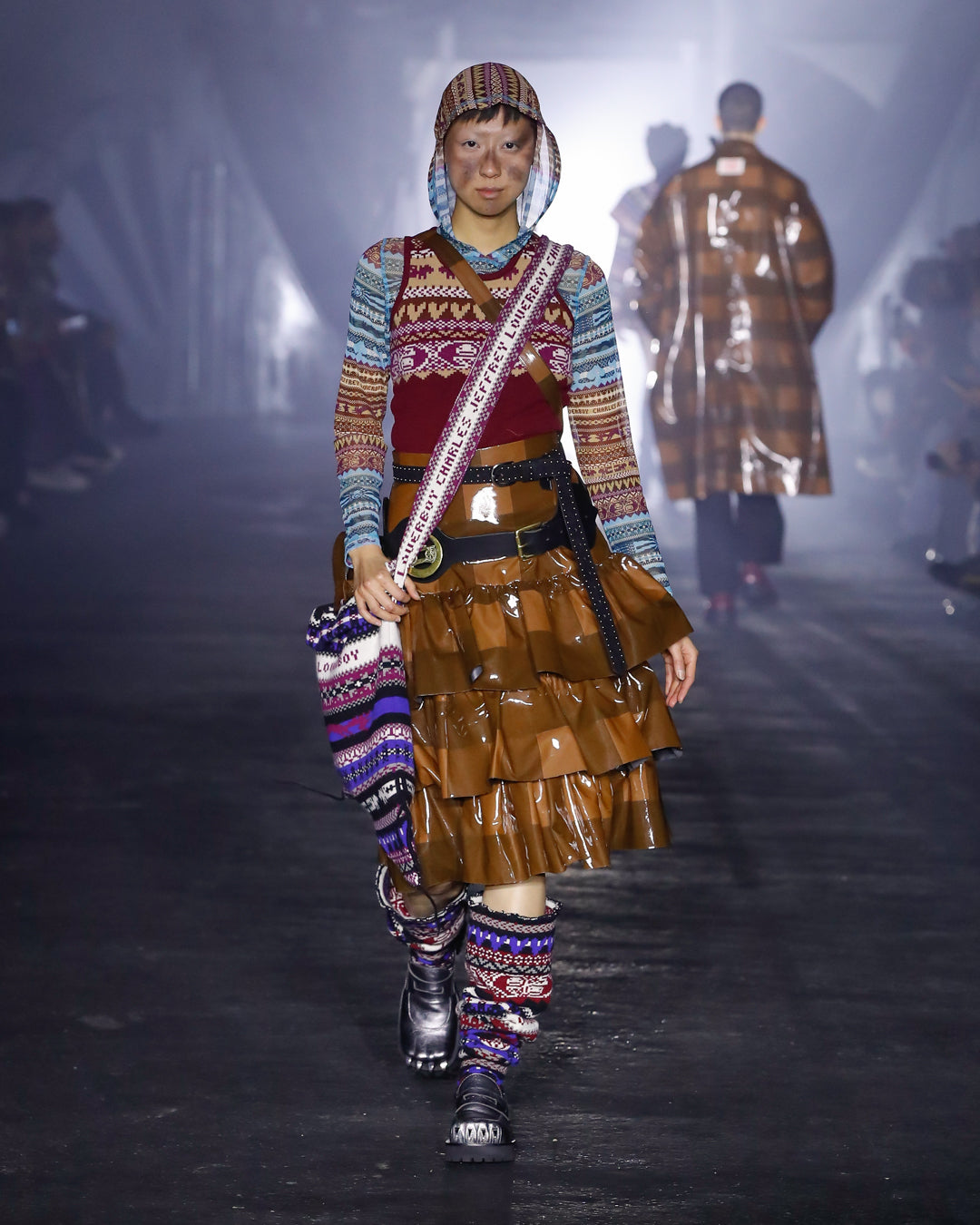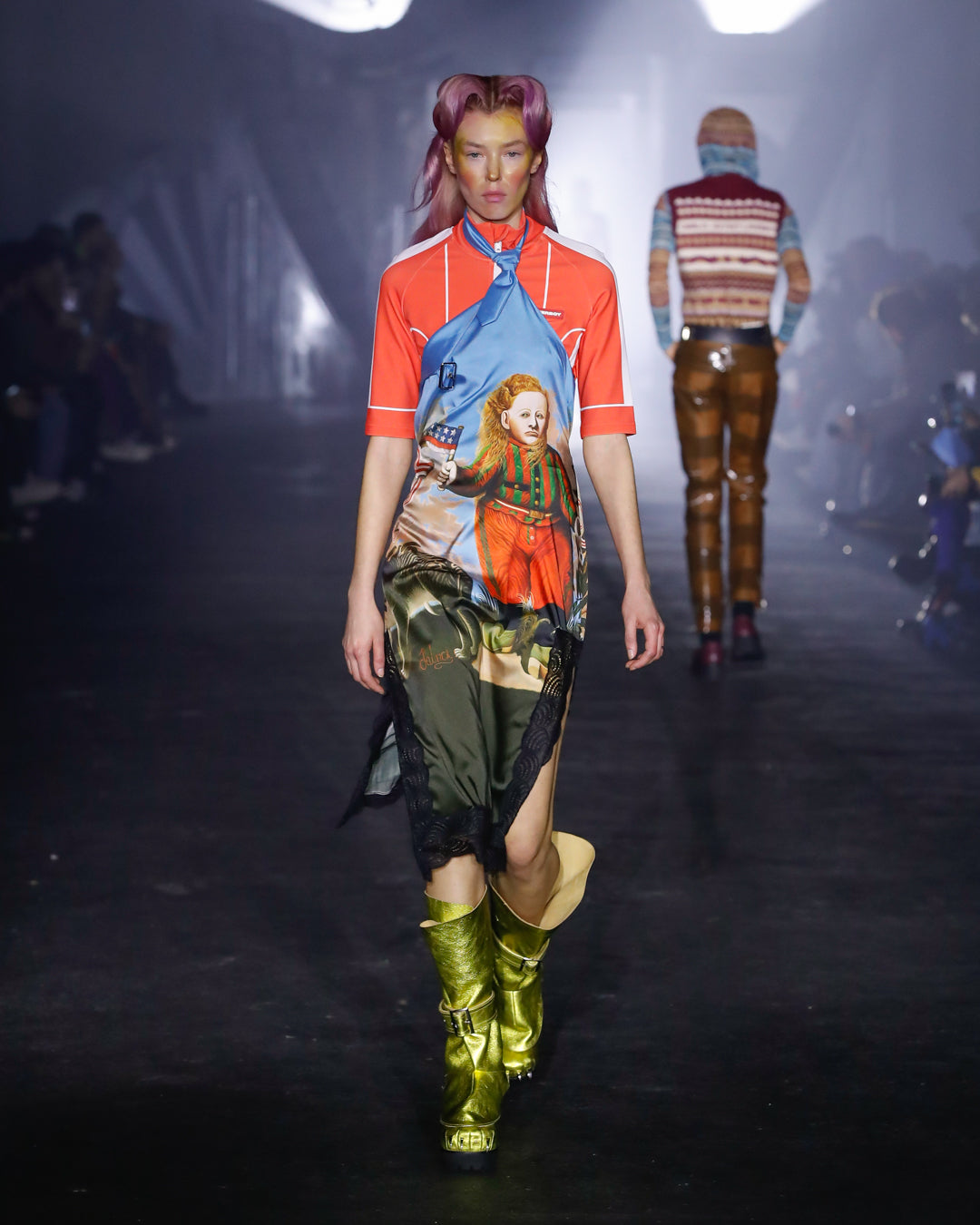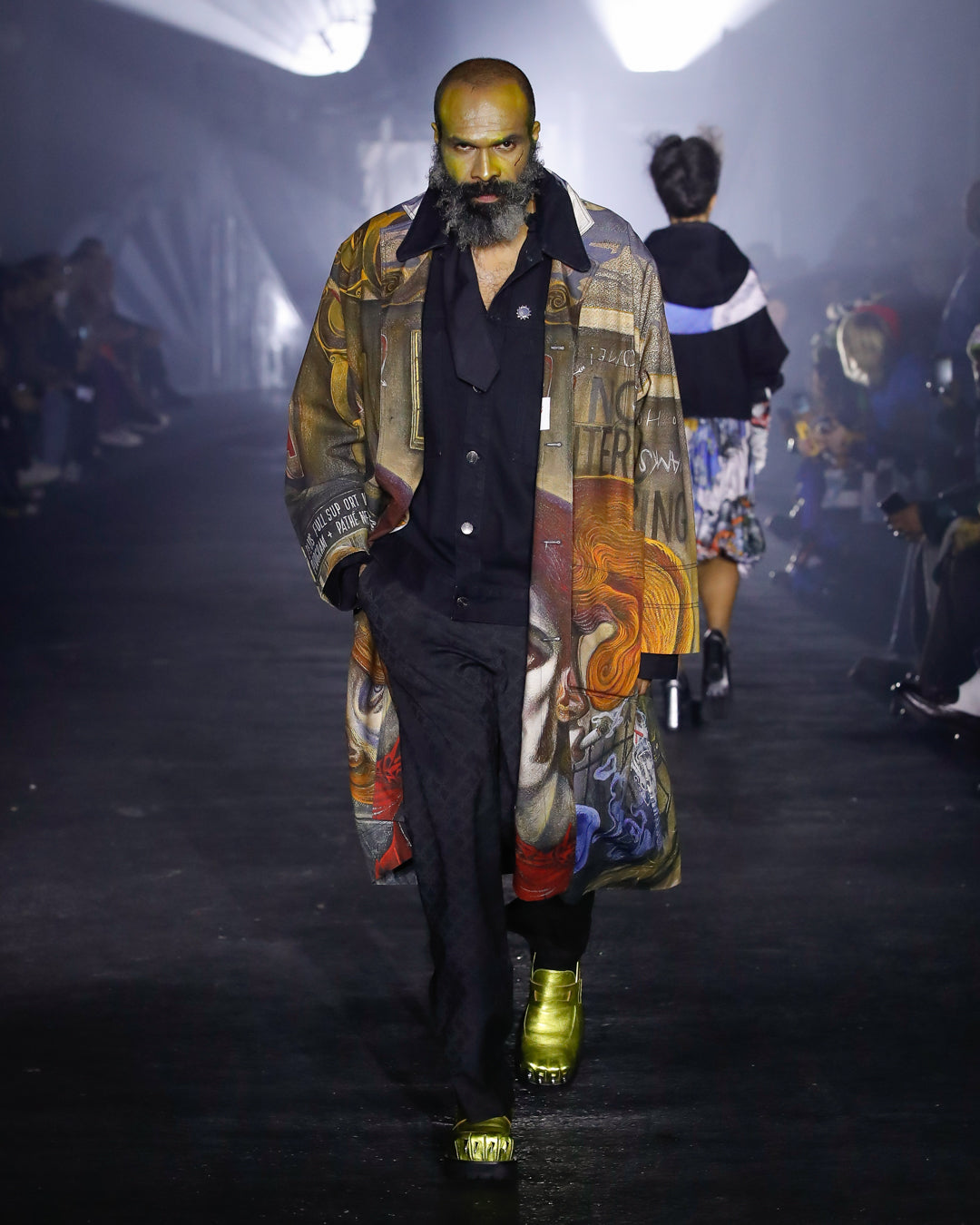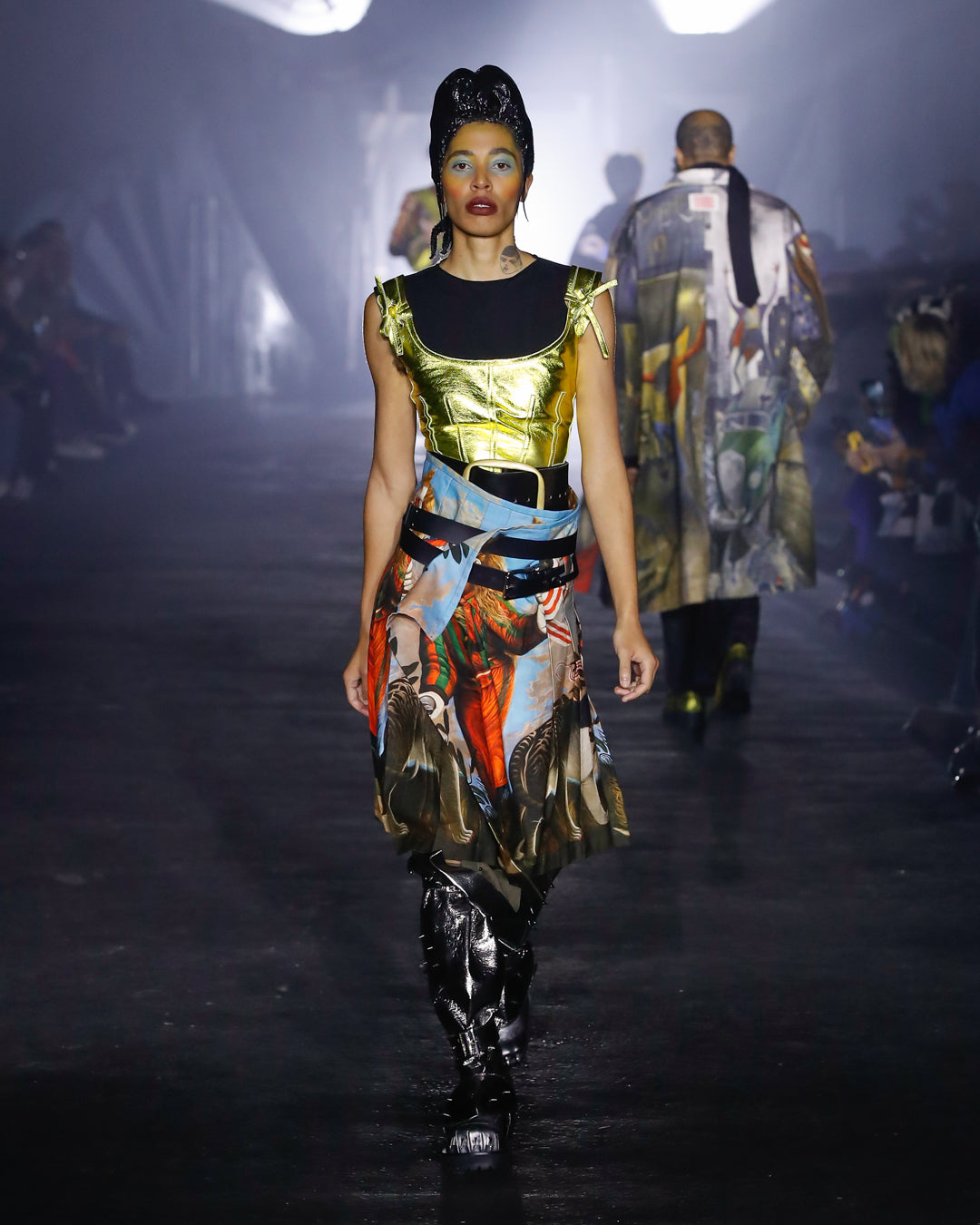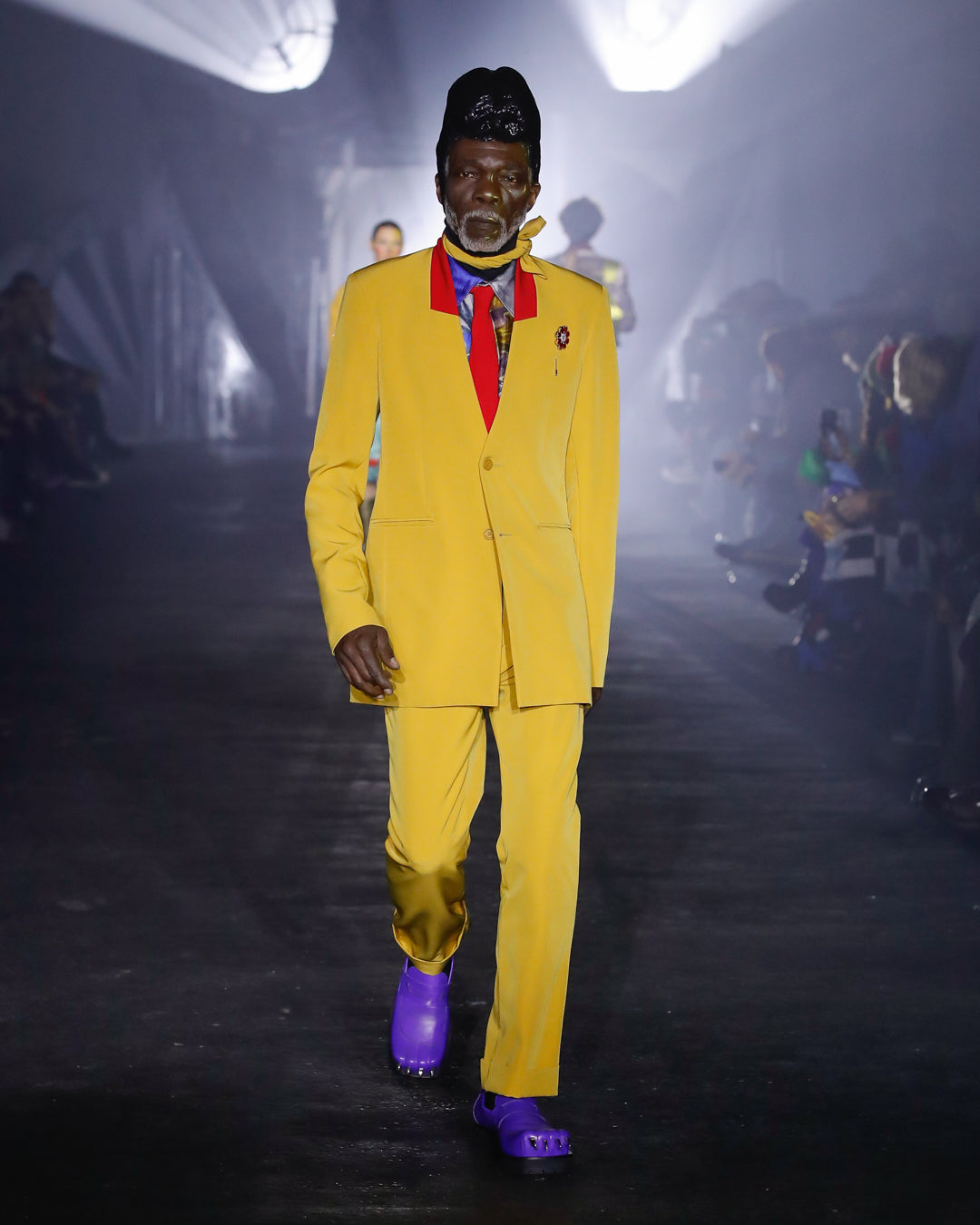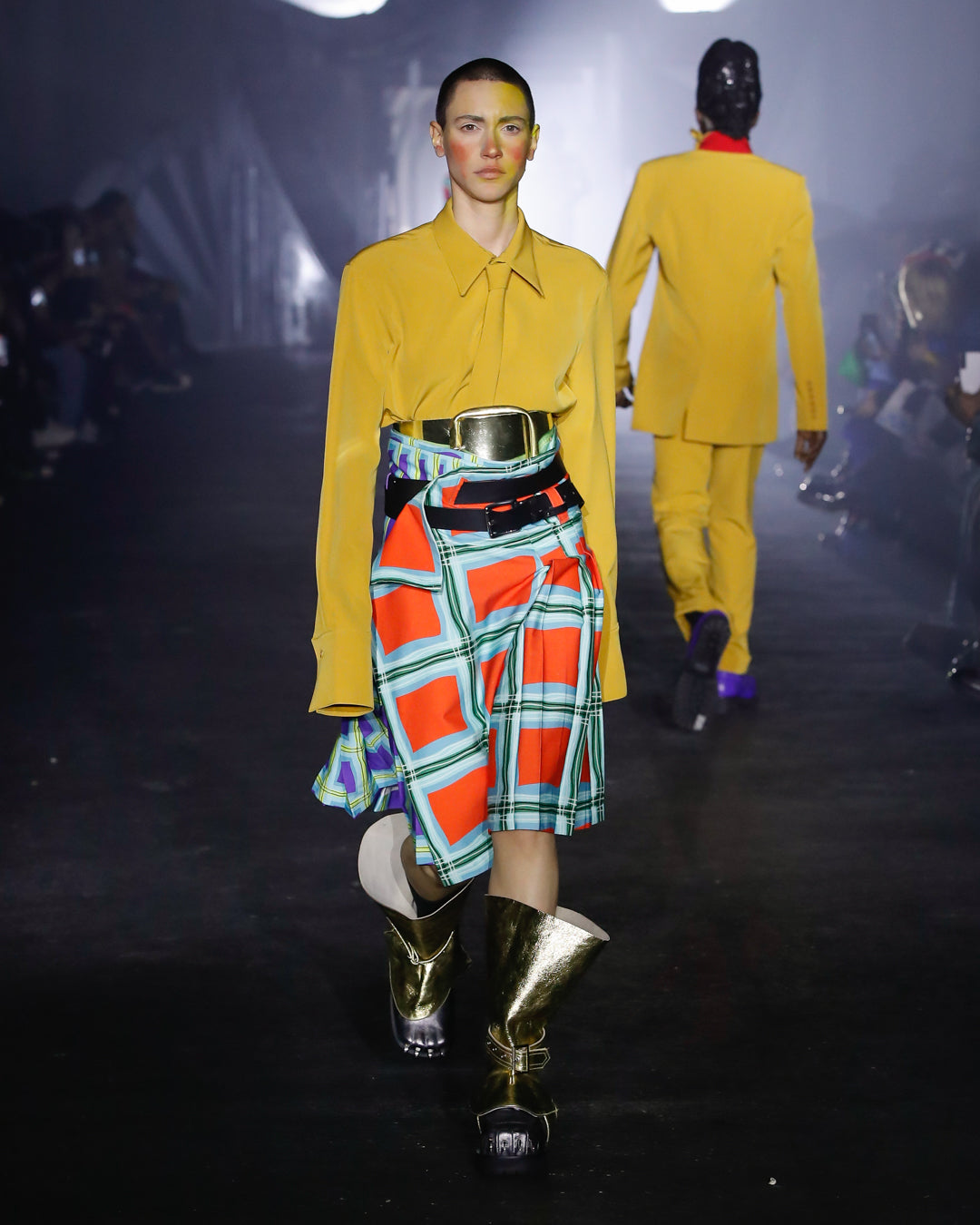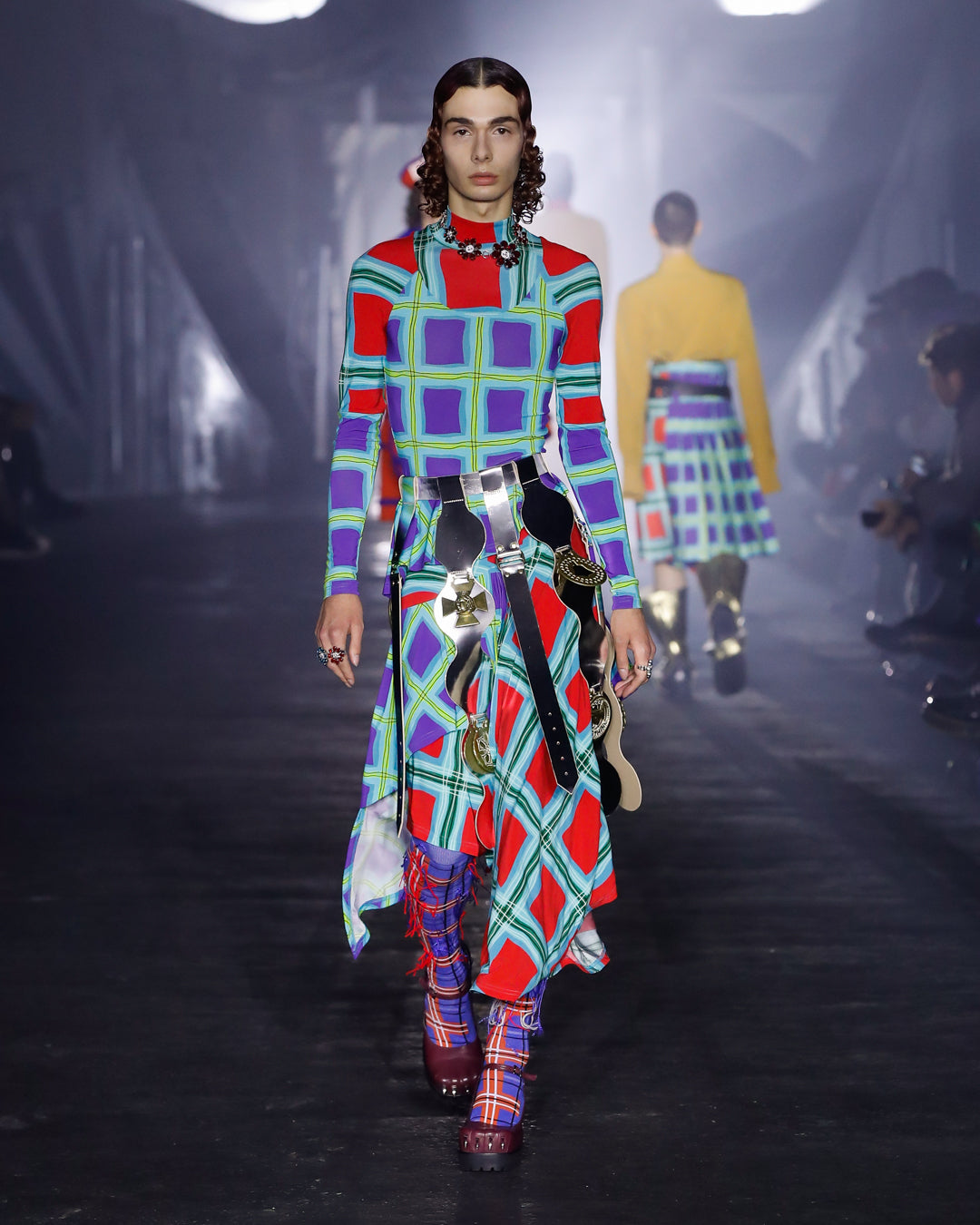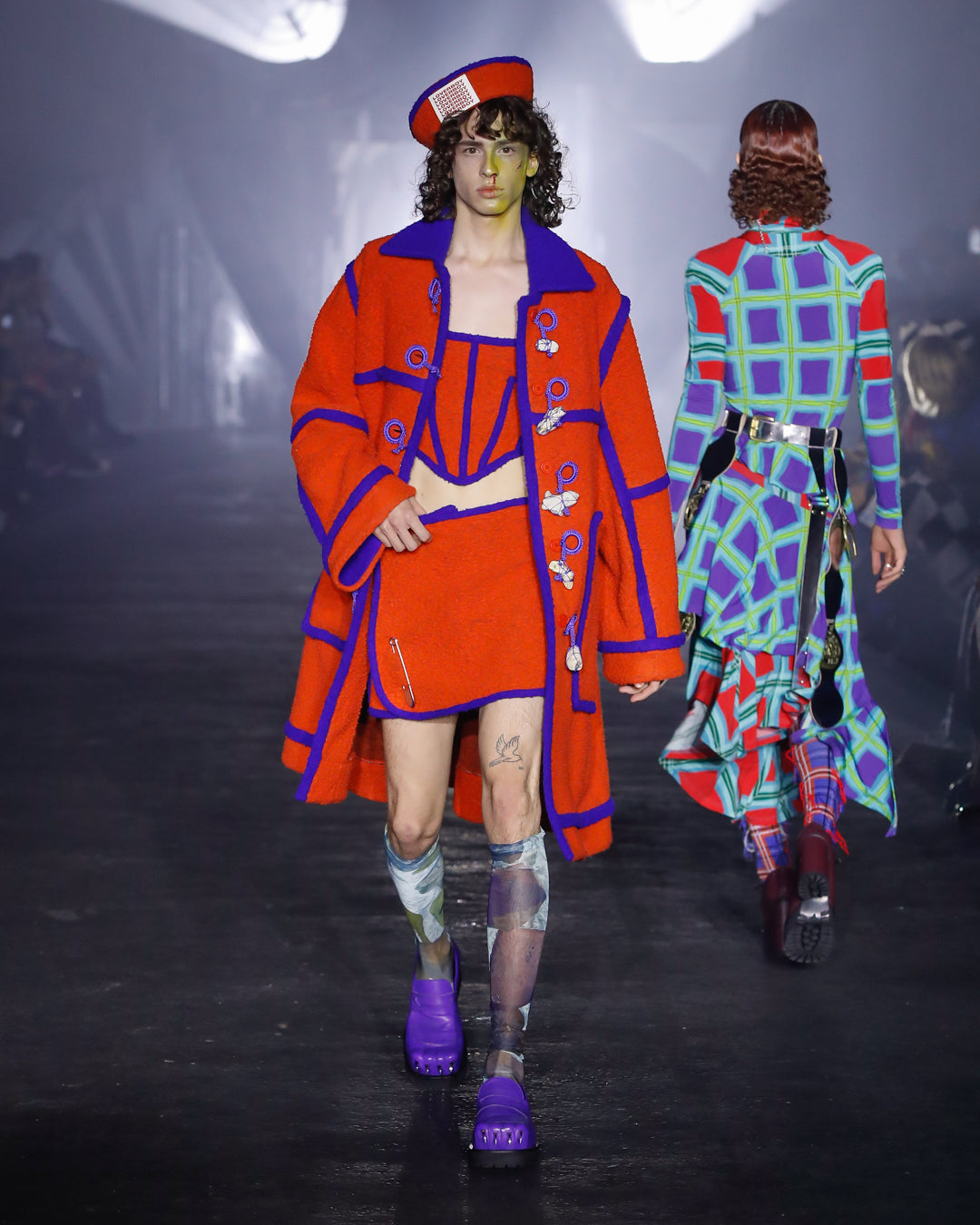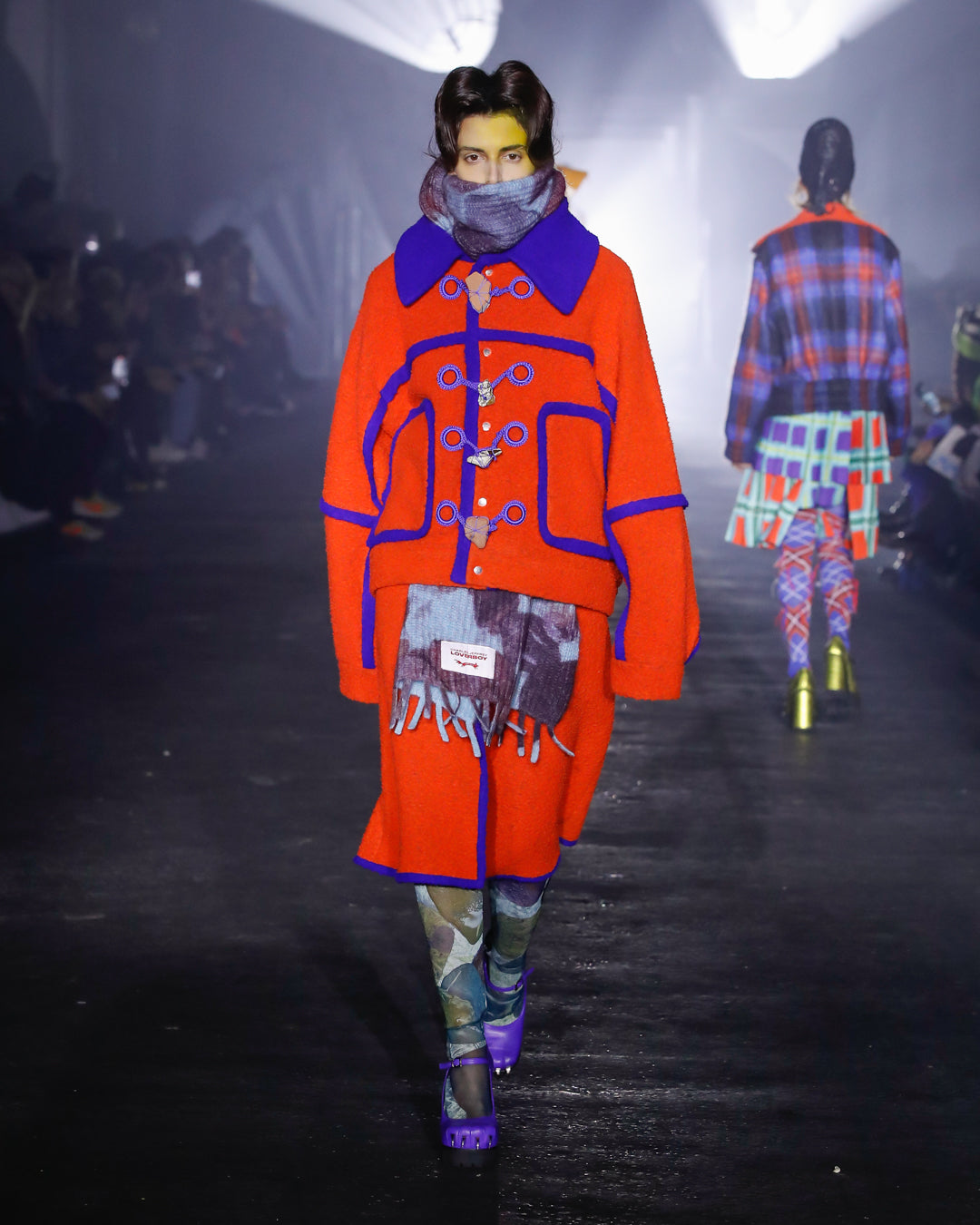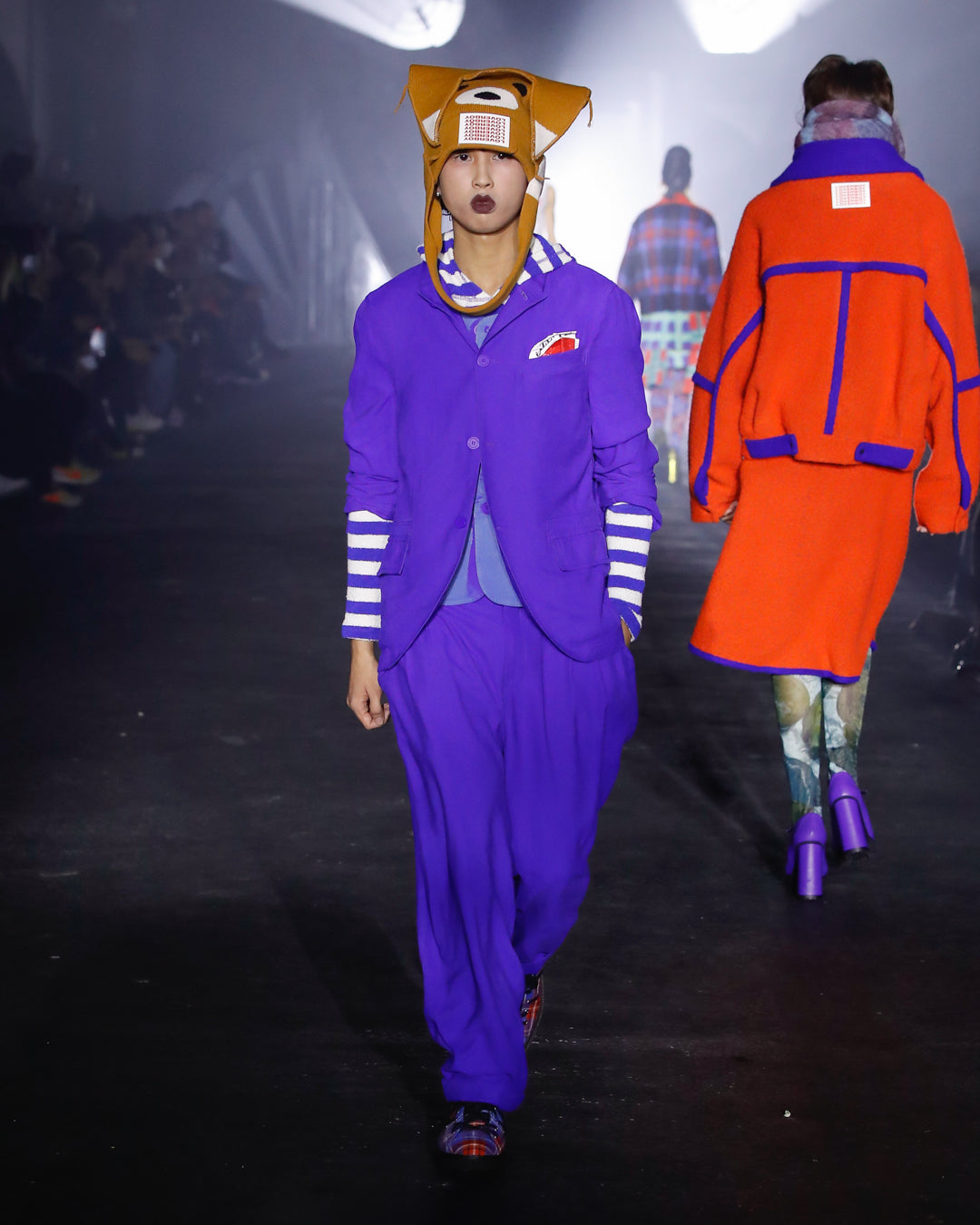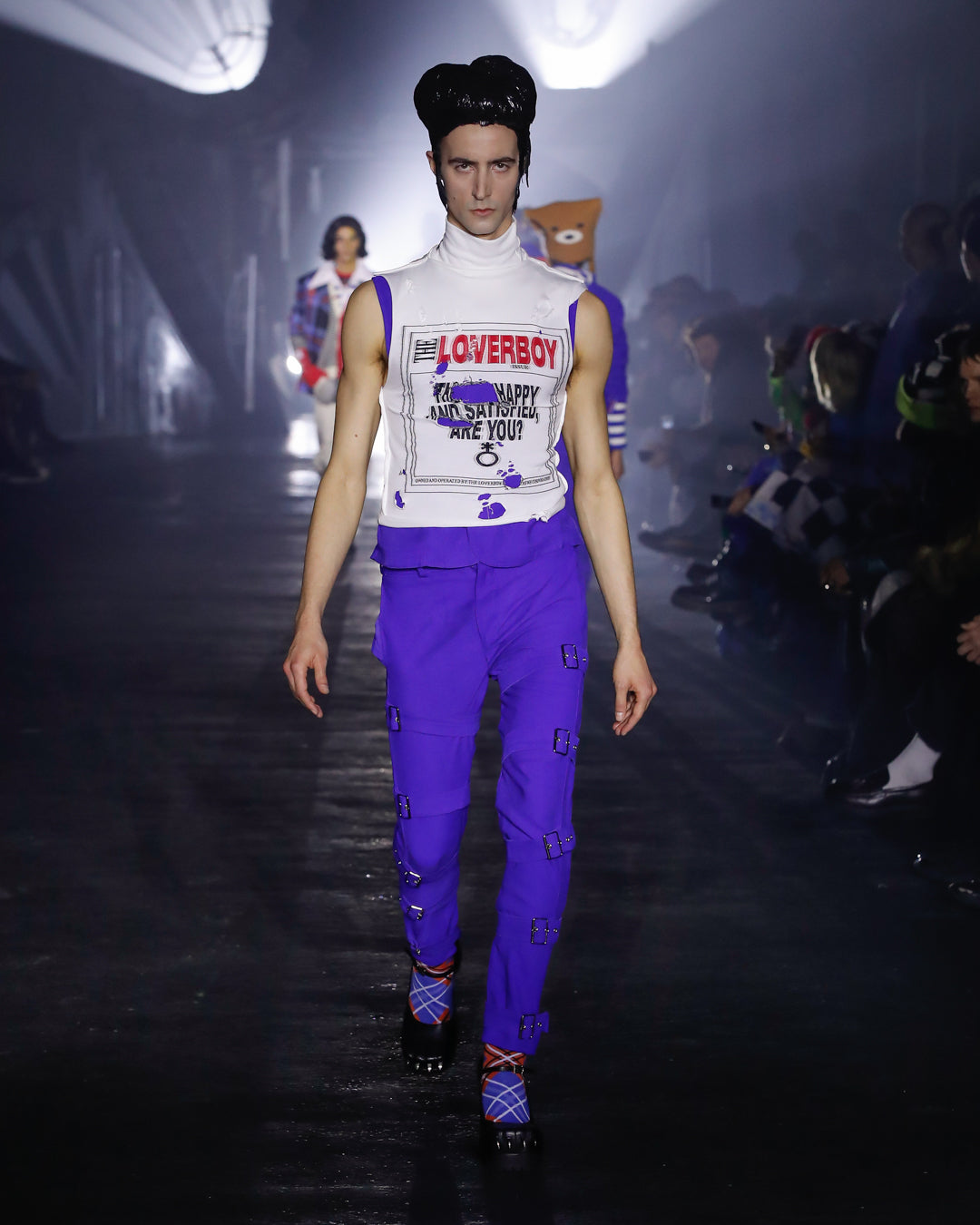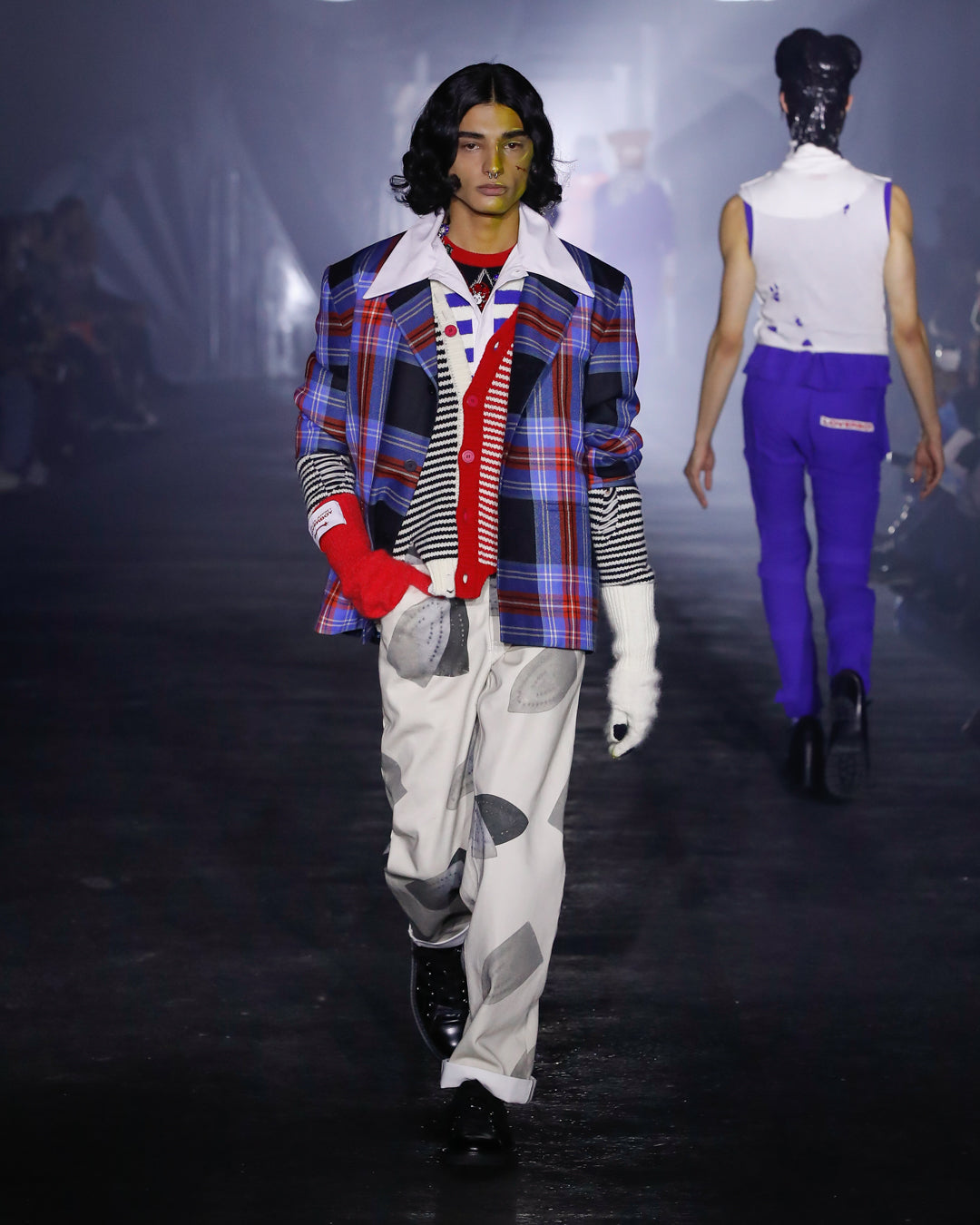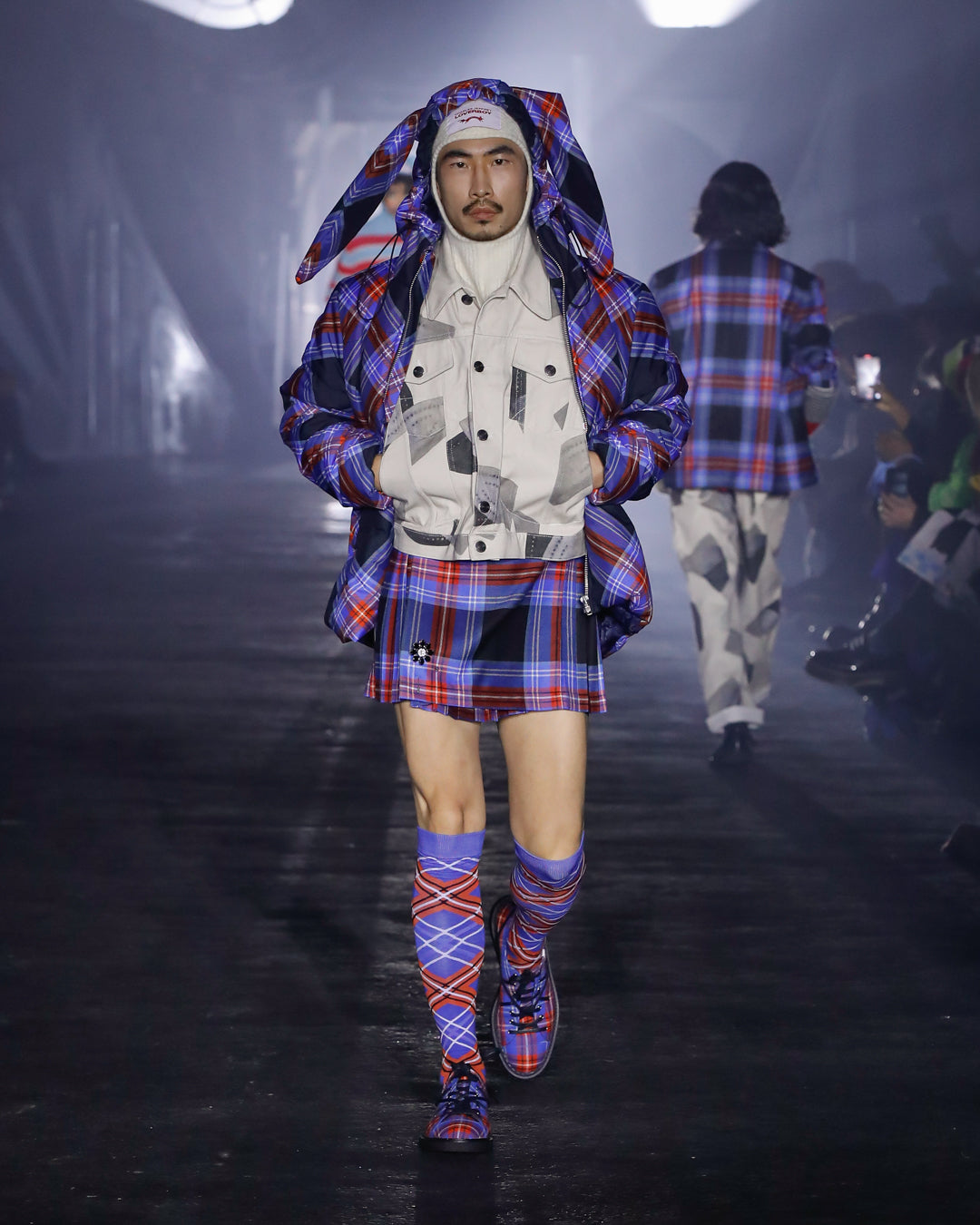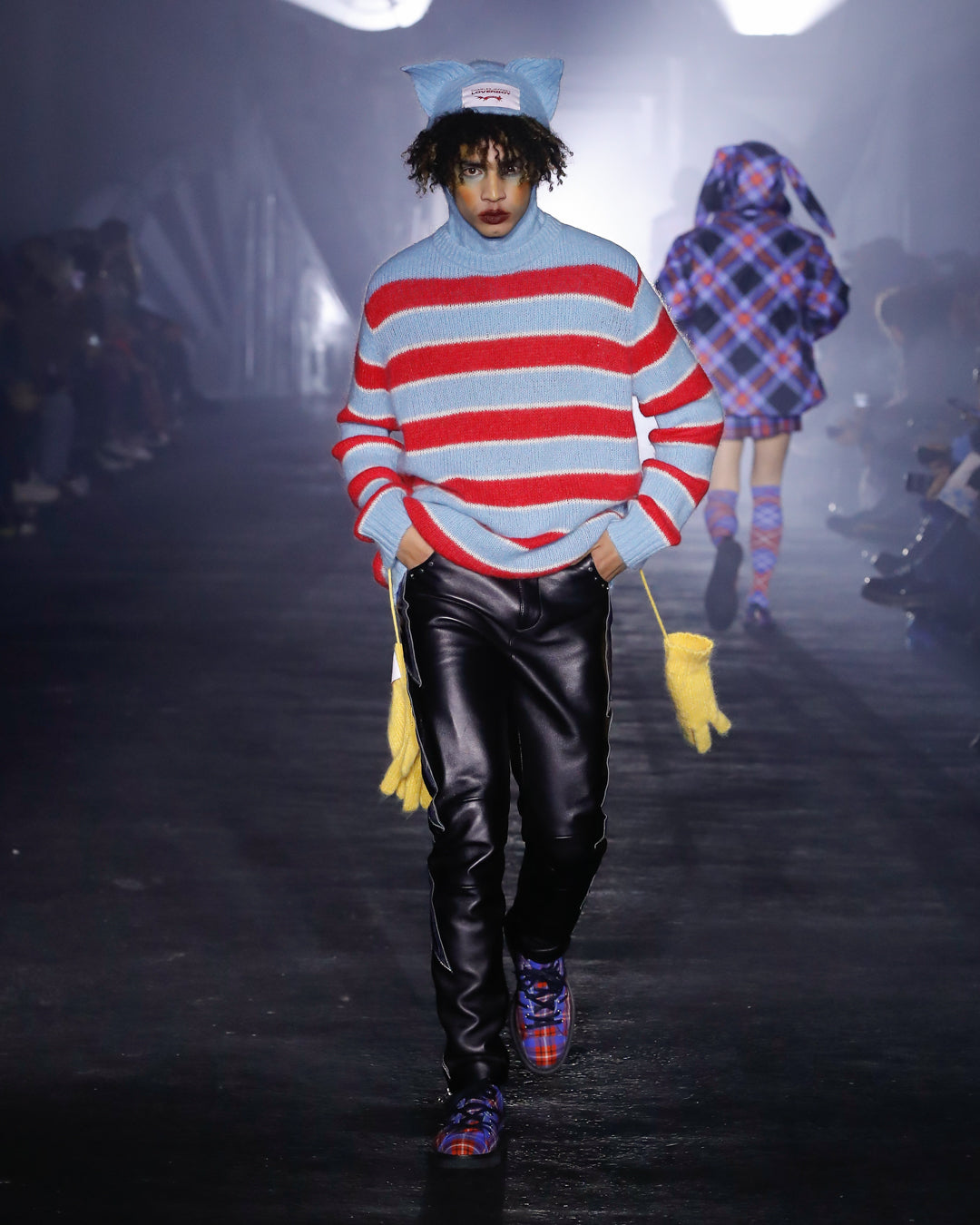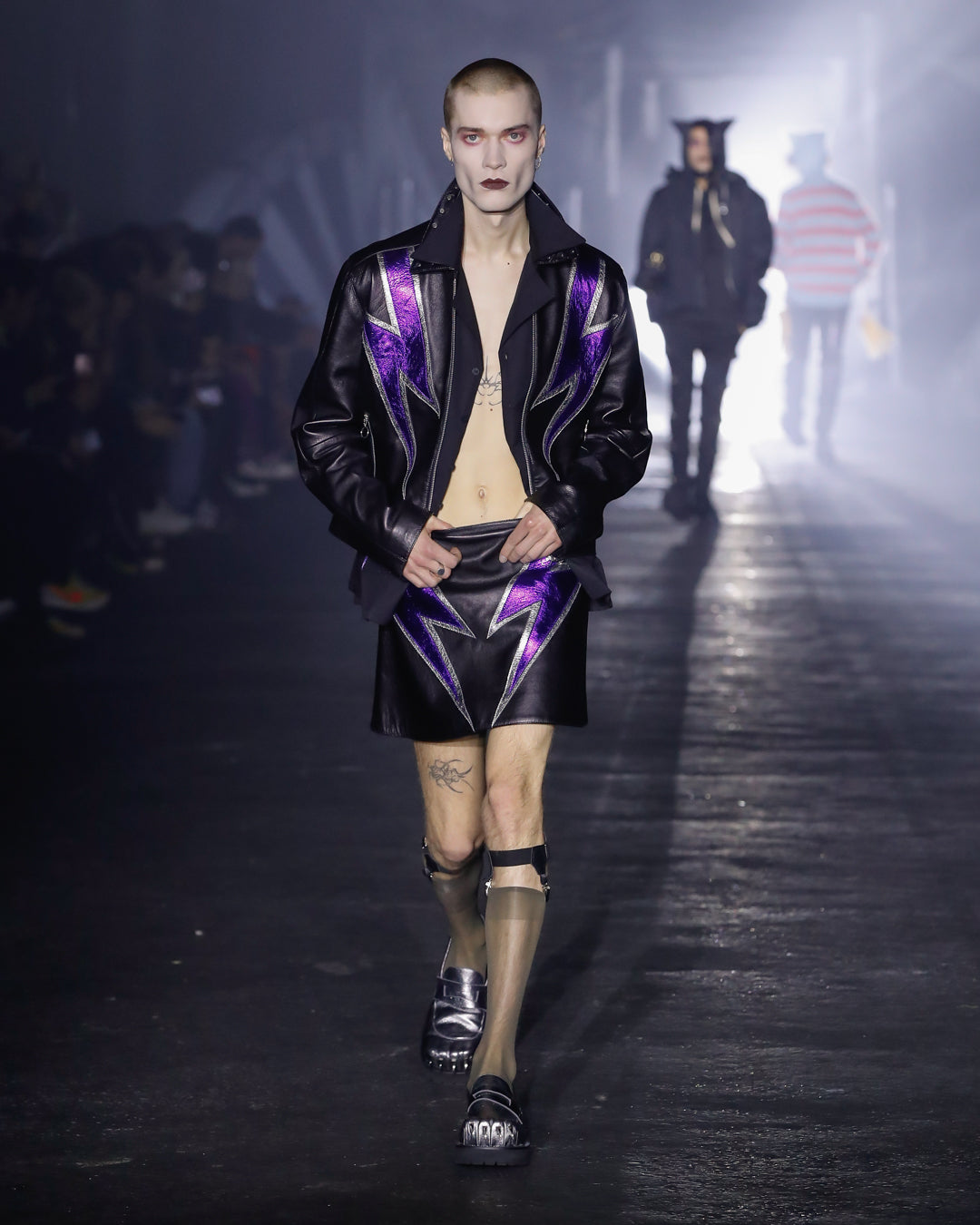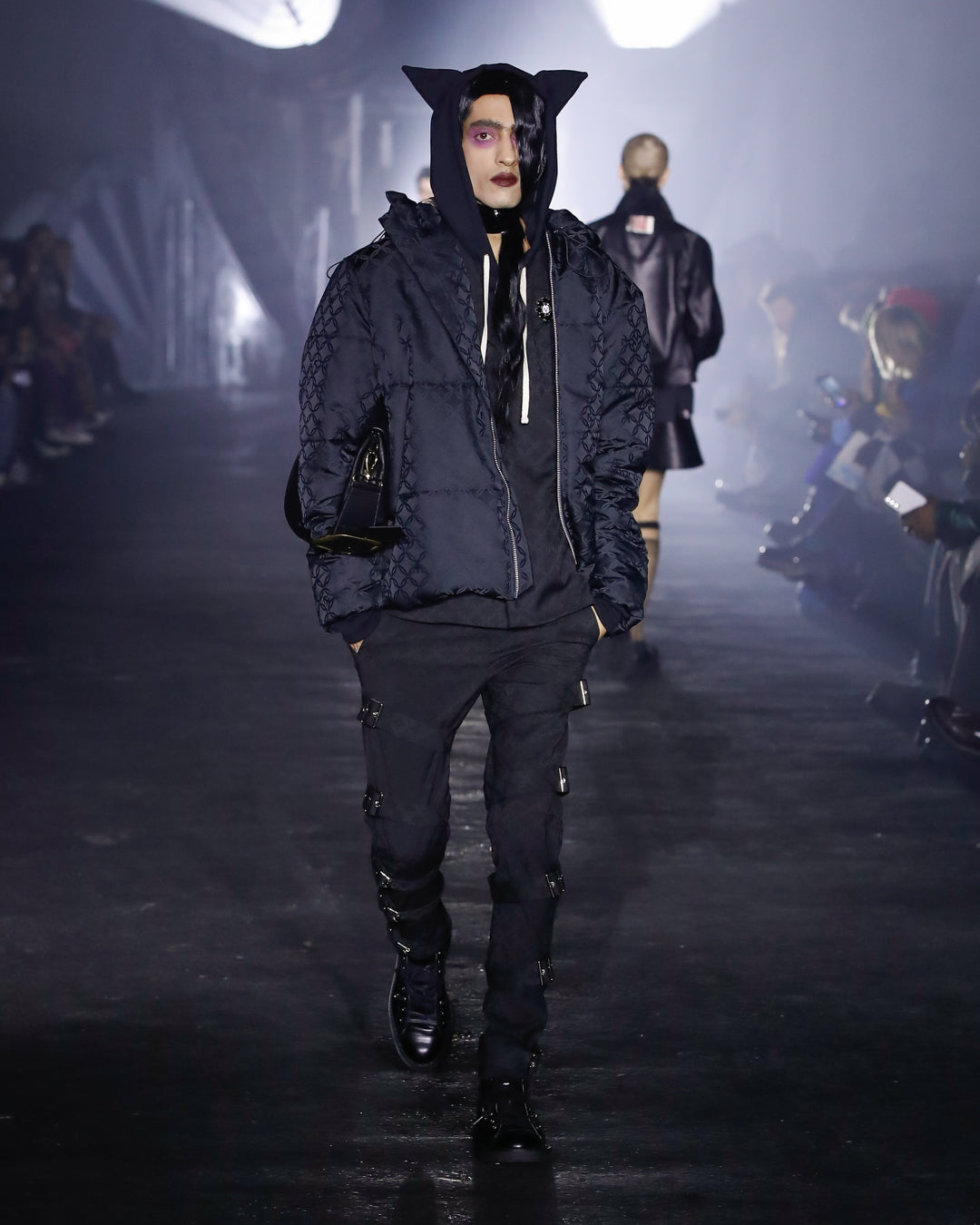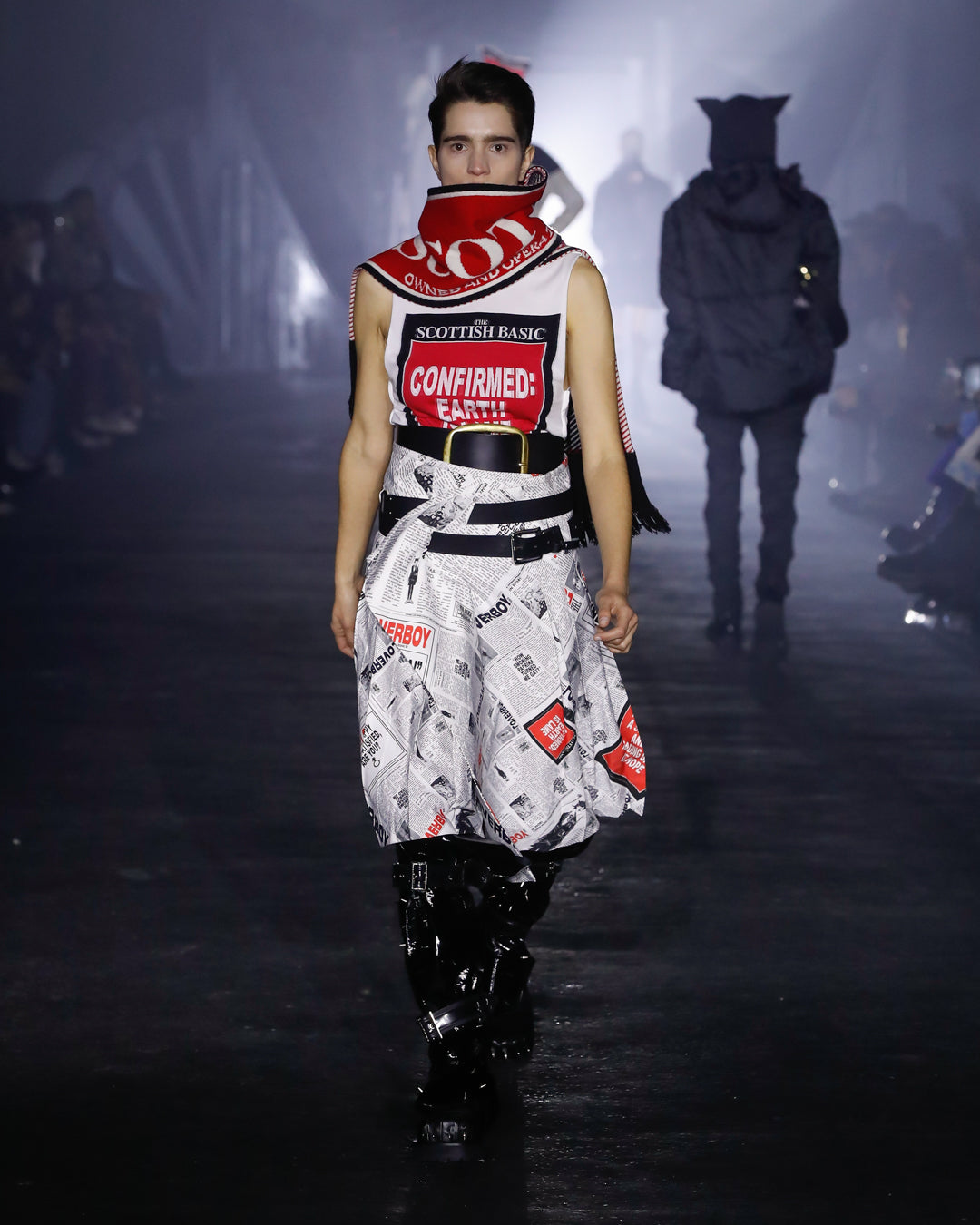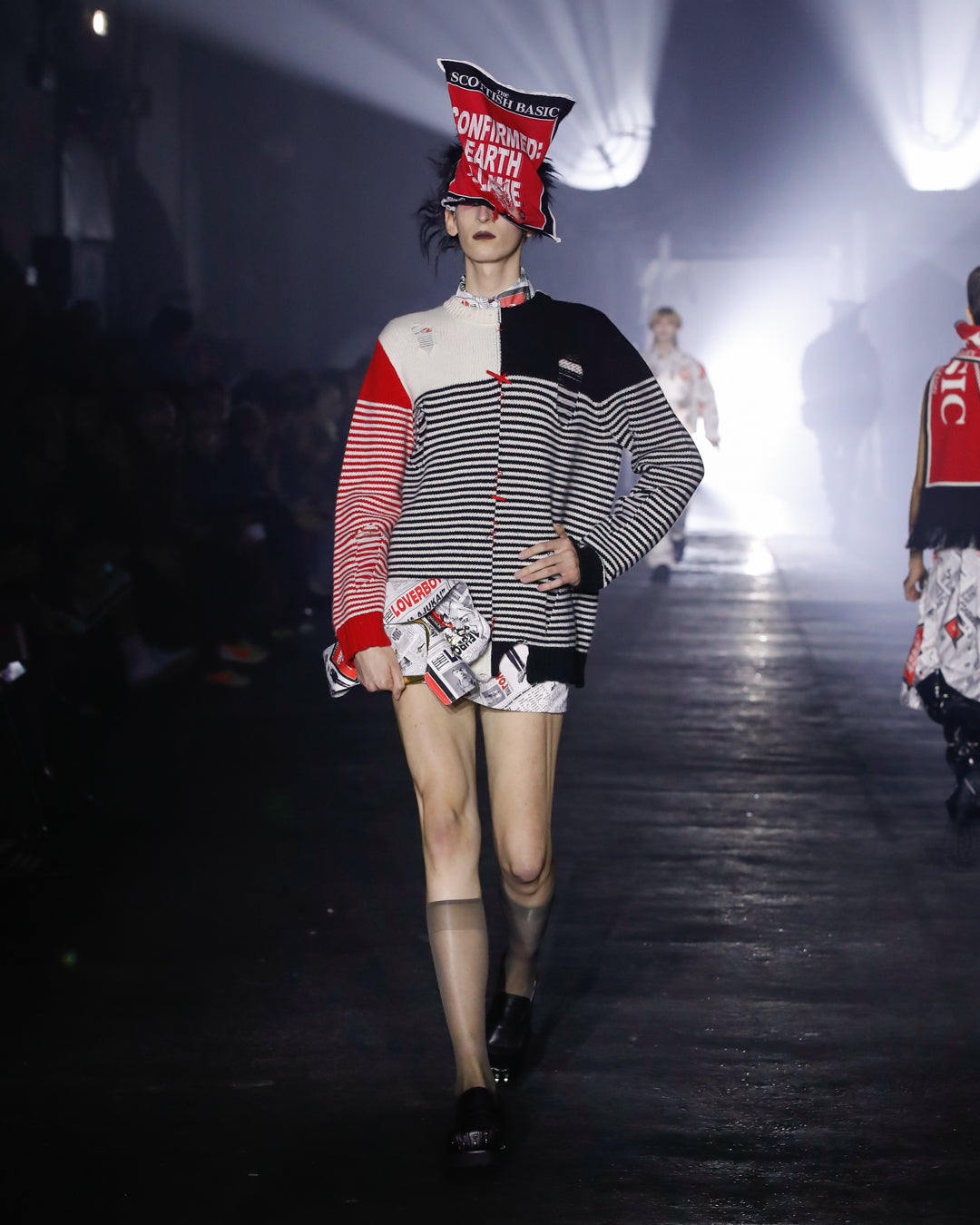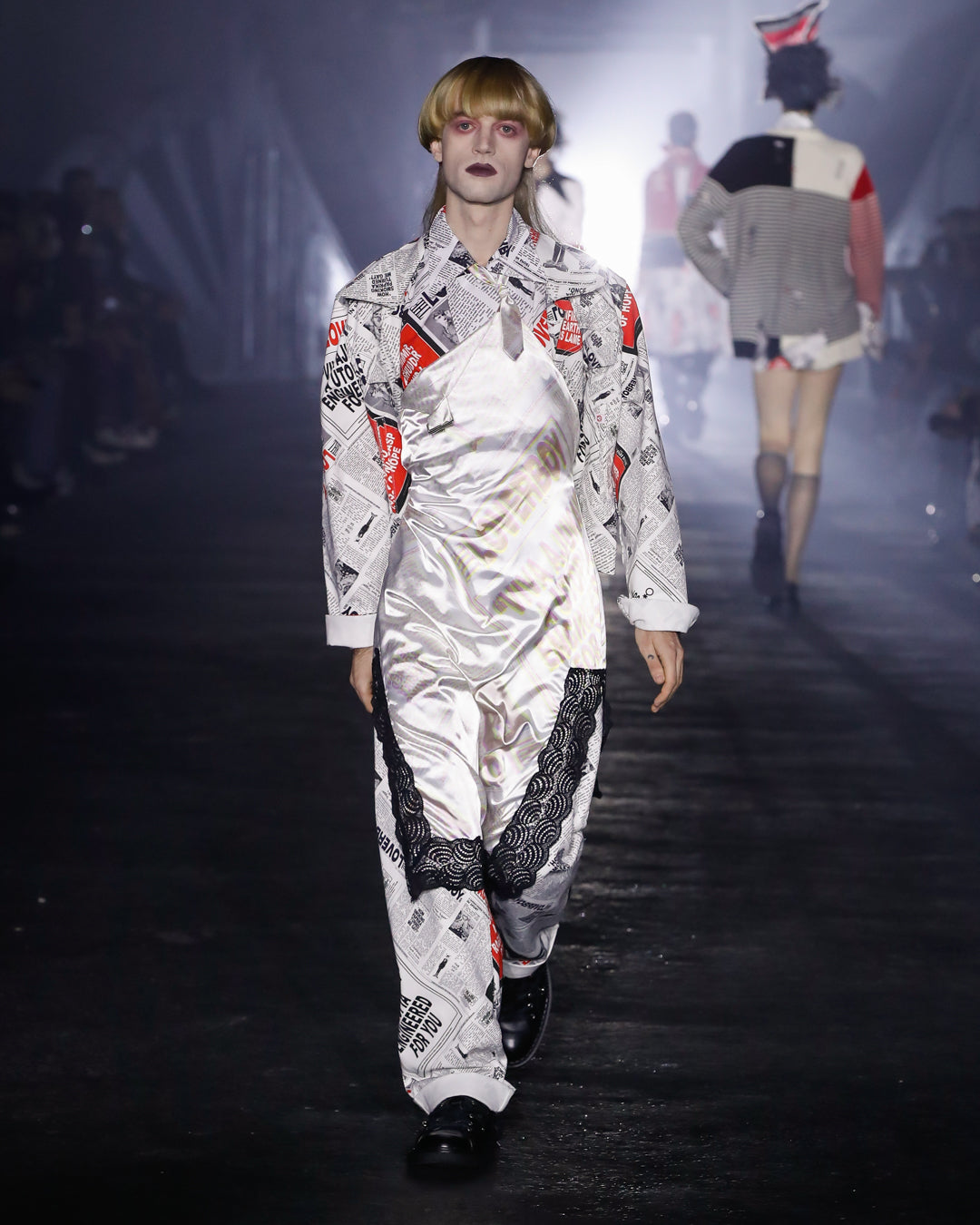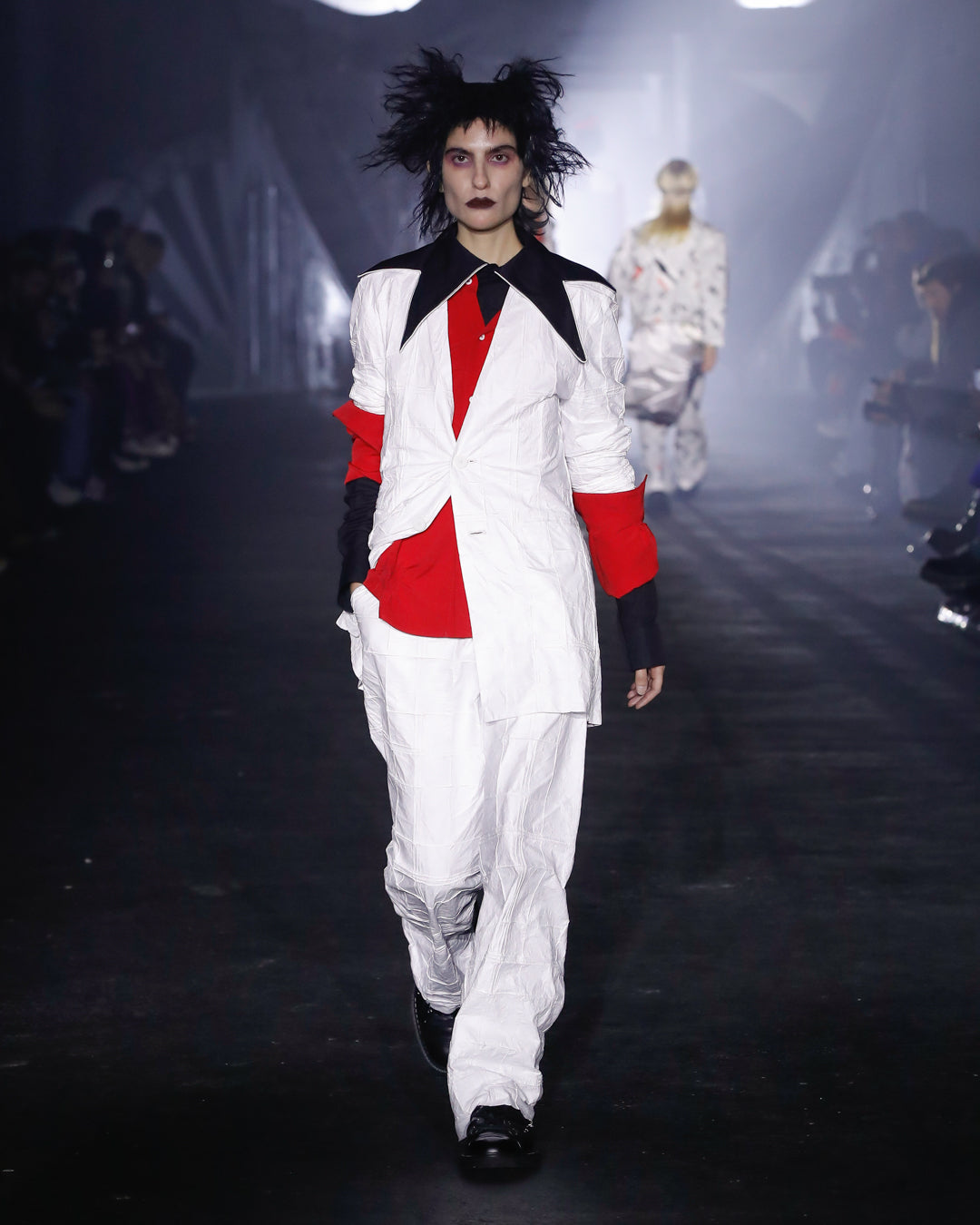AW23 "ENGINE ROOM"
WELCOME TO THE ENGINE ROOM.
CHARLES JEFFREY’s fantastical satire enters a new chapter.
THE ENGINE ROOM is a murky underworld filled with toxic fumes, haphazard machinery and labyrinthine walkways. It is purgatory.
Scooped up from the wasteland below, Workers are responsible for feeding the furnaces, thus keeping the heavenly floating city of Ajuka from falling out of the sky. If they work hard enough, some are granted citizenship and the chance of a fresh start.
But the Engine Room is also a trap. Many spend a lifetime toiling there, trying and failing to escape, losing their minds in the process.
LOVERBOY’s Autumn/Winter 2023 collection is presented in three parts.
First we meet the Workers. Bedecked in warm layers, protective gear and reworked staples, their outfits reflect their arduous conditions they endure. Unexpected embellishments recall the trinkets made by magpie-eyed mudlarkers, highlighting the Workers’ ingenuity in the face of adversity.
Part two introduces us to the Posers, former workers who now set the sartorial agenda in Ajuka, populating the city’s many luxury boutiques. Sleek tailoring, oversized ruffles and ornate prints characterise their clothing, alongside fearsome, claw-footed footwear.
Finally, we meet the Snakes, Ajuka’s arch gossip merchants who disseminate the city’s news. Their uniform is heavily influenced by the tools of their trade and their medium of choice – the newspaper. A desaturated palette provides a base for tailored tweeds and a scribbled star motif, later giving way to stark, soulless white and newsprint accents.
The Engine Room draws a great deal of inspiration from the visual and literary worlds of Scottish artist and playwright John Byrne (b. 1940). The multi-hyphenate master is responsible for his own surreal universe of stories and images, many of which highlight the nuances of working class experience and the power of creativity. The Engine Room is notably inspired by Byrne’s 1987 play, The Slab Boys Trilogy.
Charles Jeffrey and his team have woven Byrne’s world into that of Ajuka. References to Byrne’s own distinctive personal style can be found in the predominance of fairisle, tweeds and artful accents. The homage is completed through the inclusion of arresting painted scenes, which find their way onto numerous pieces thanks to the support of Byrne’s archive.
Date: 15.01.2023
Location: Ride Milano
Words by: Harald Smart
